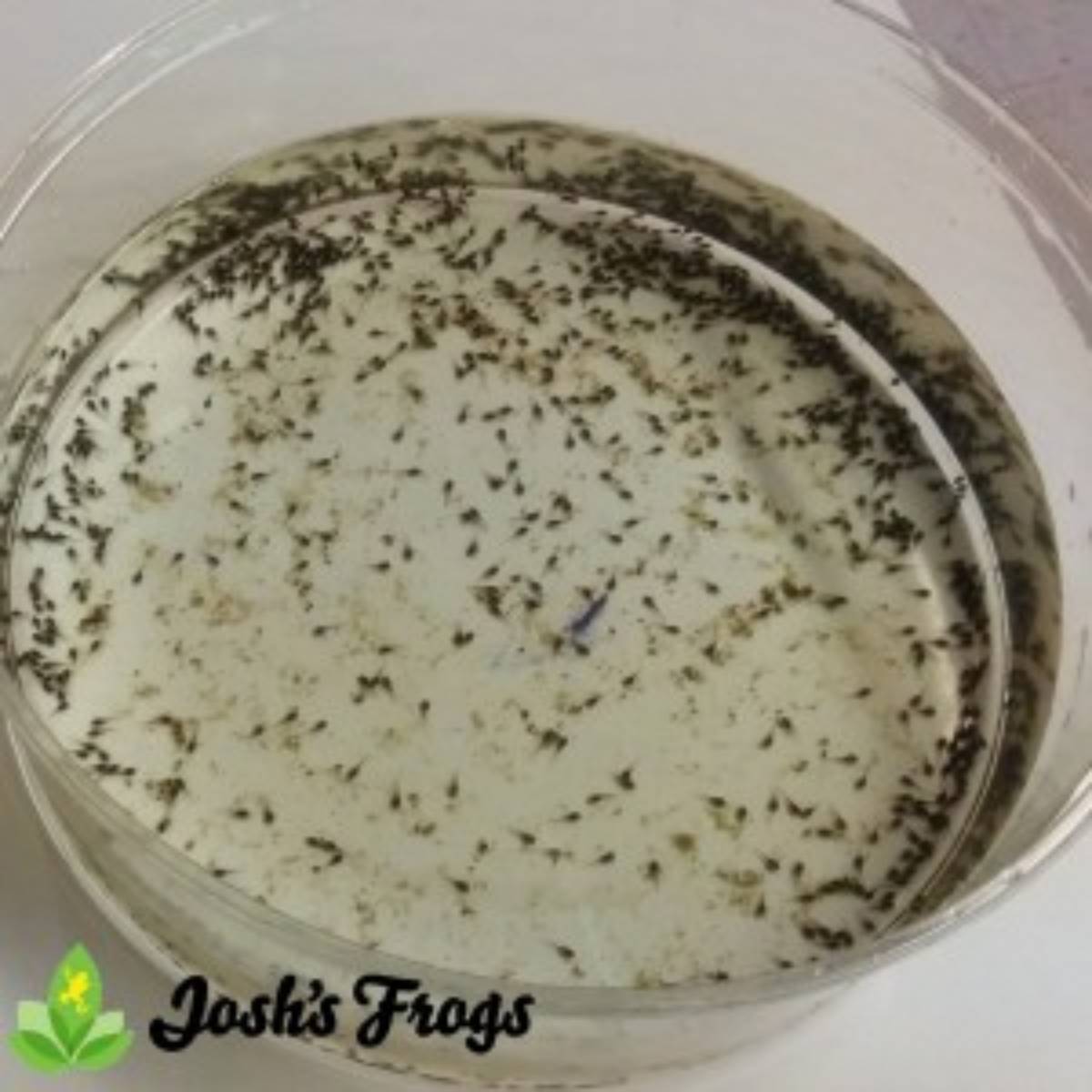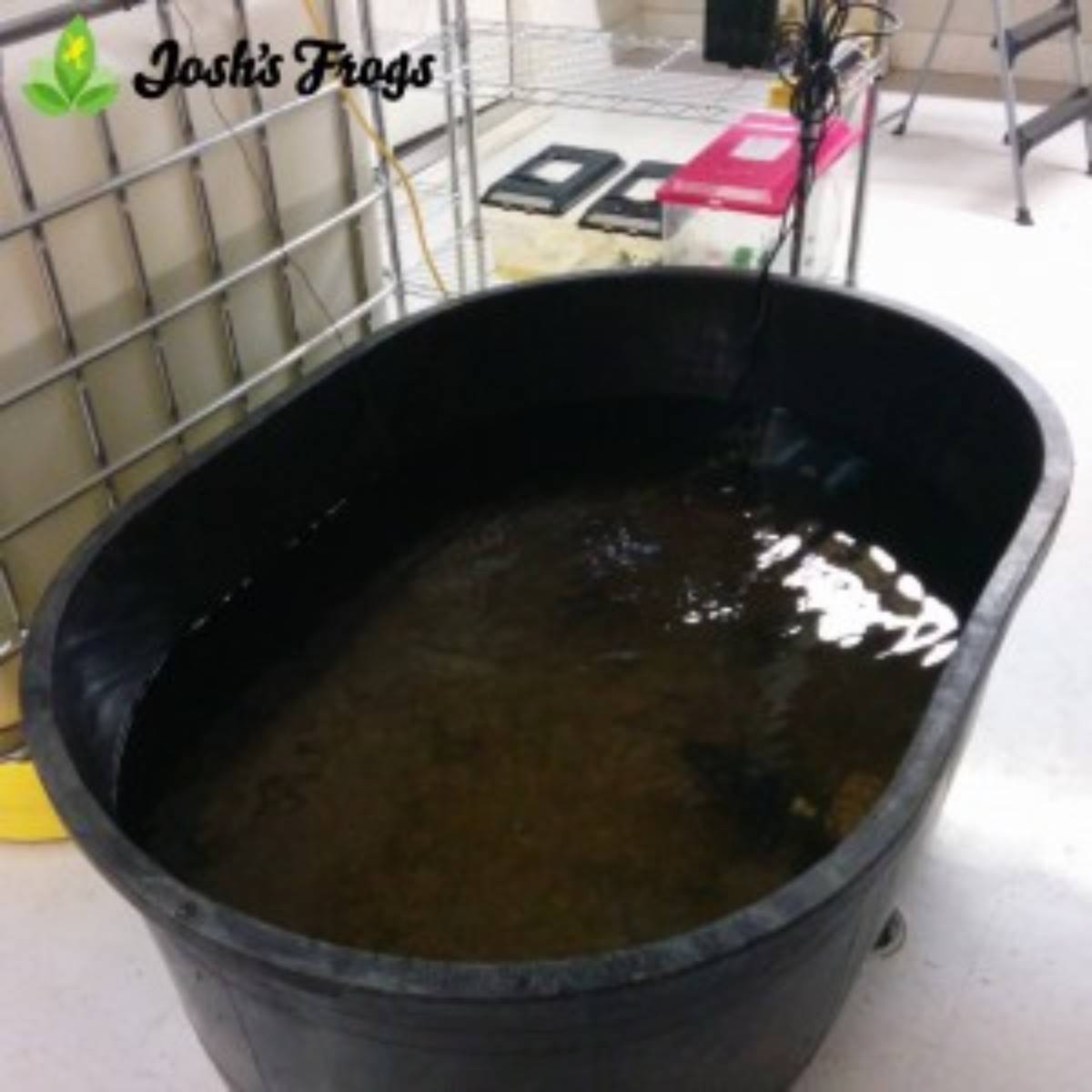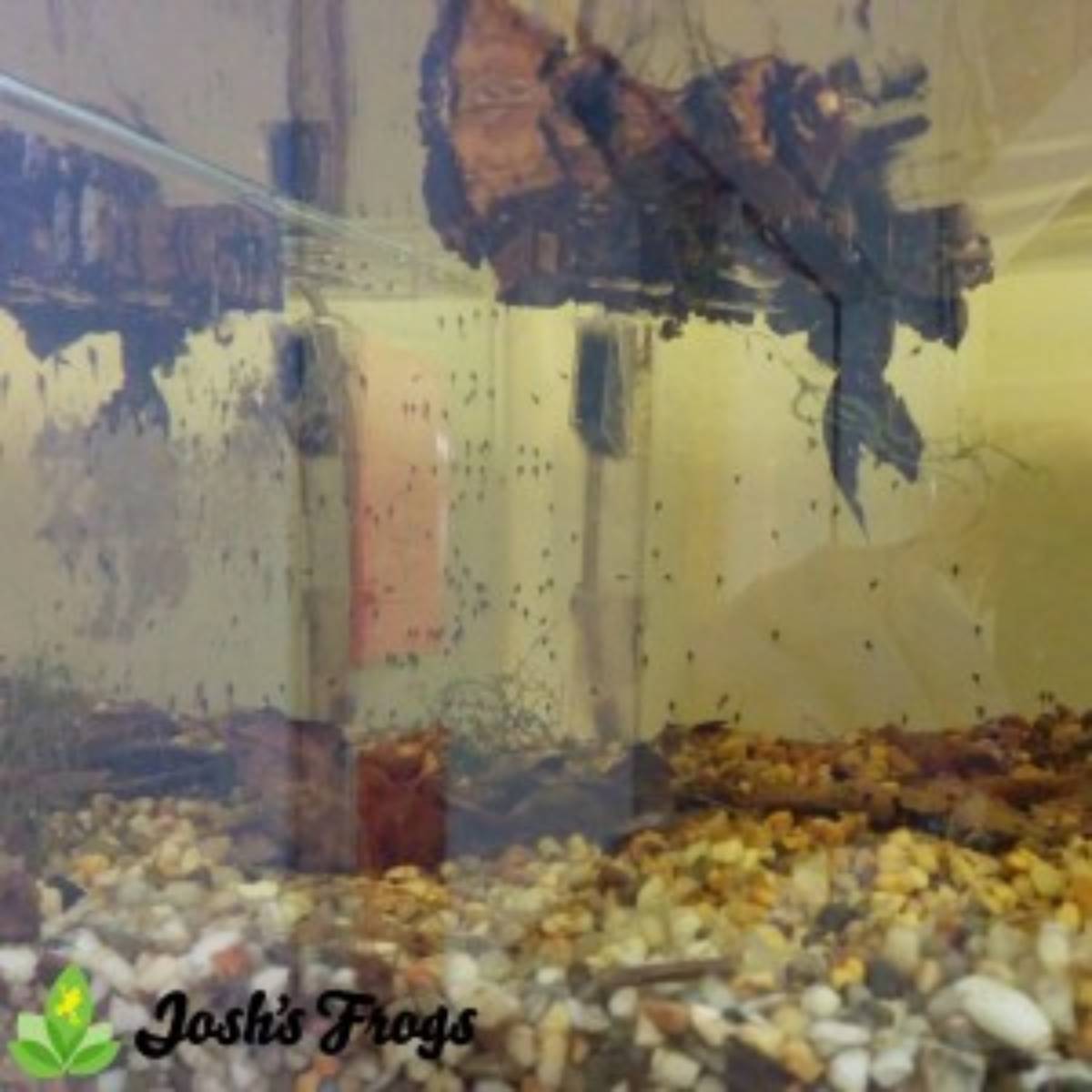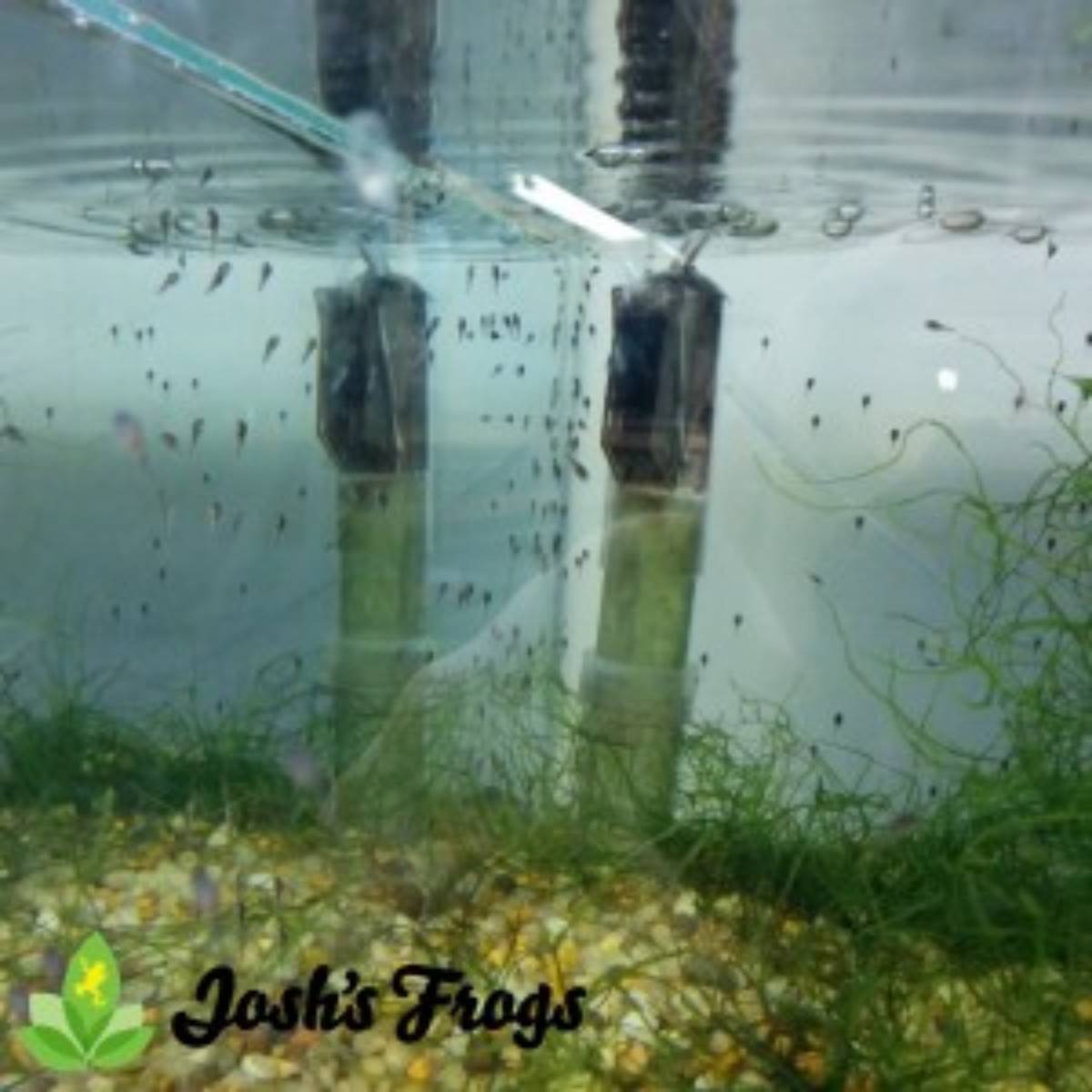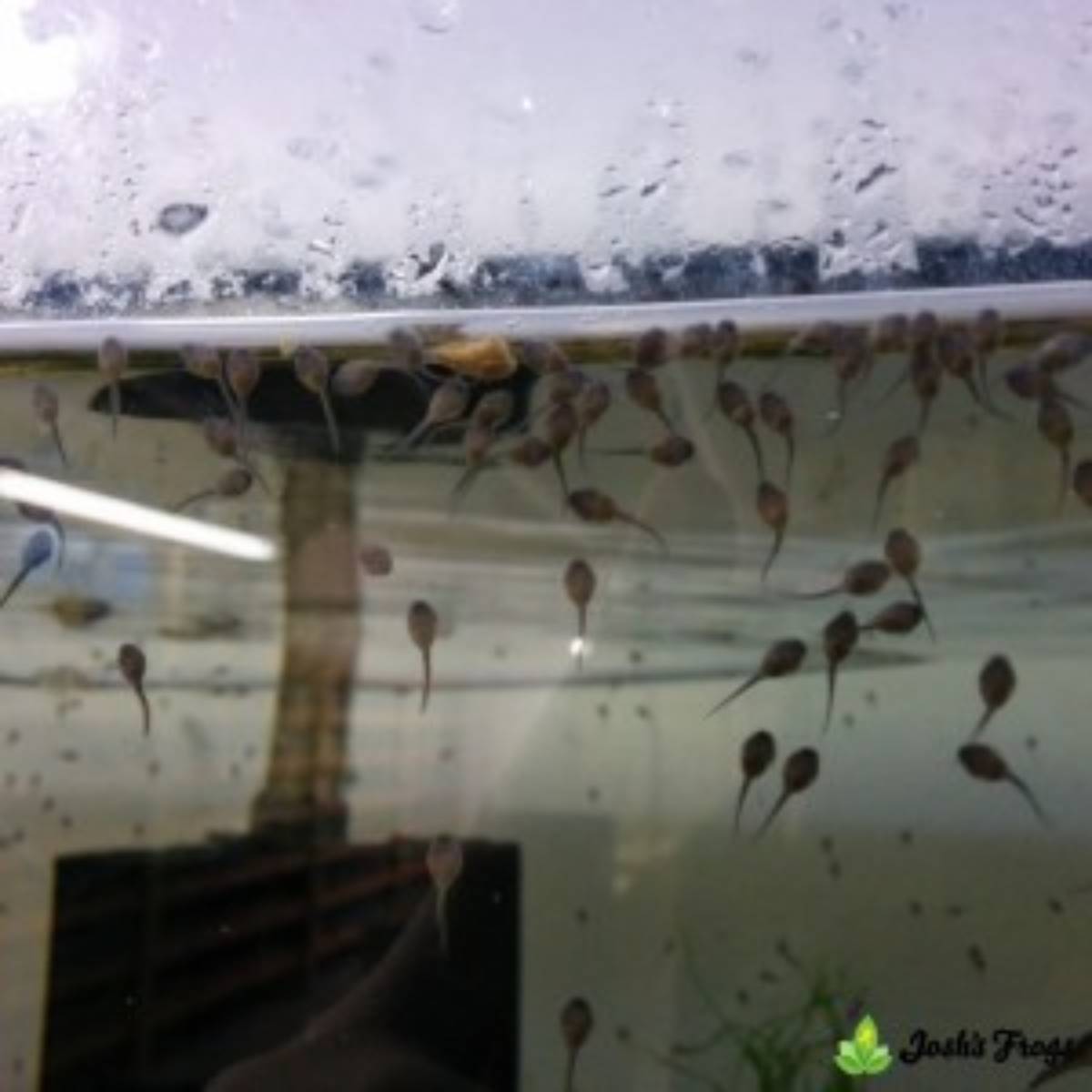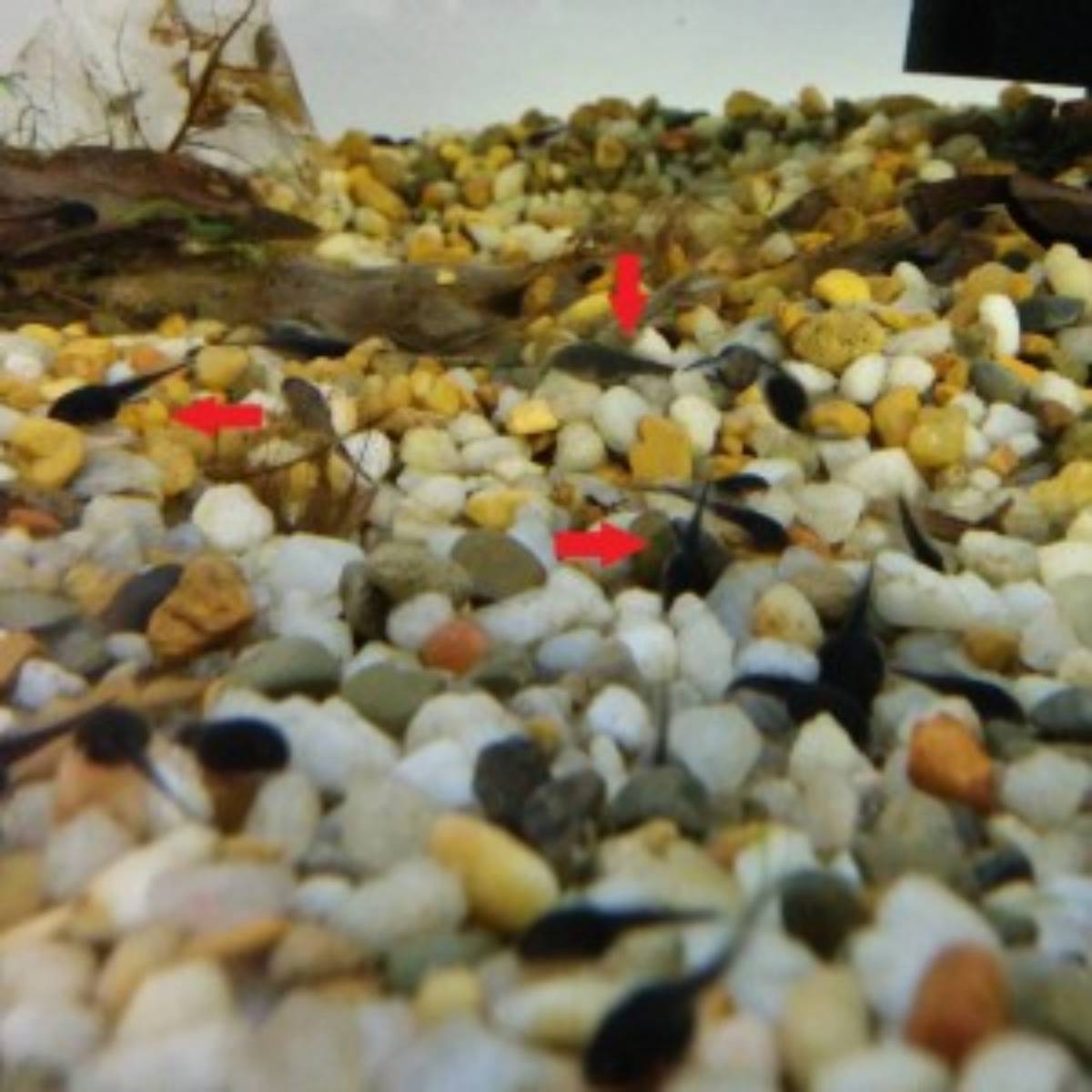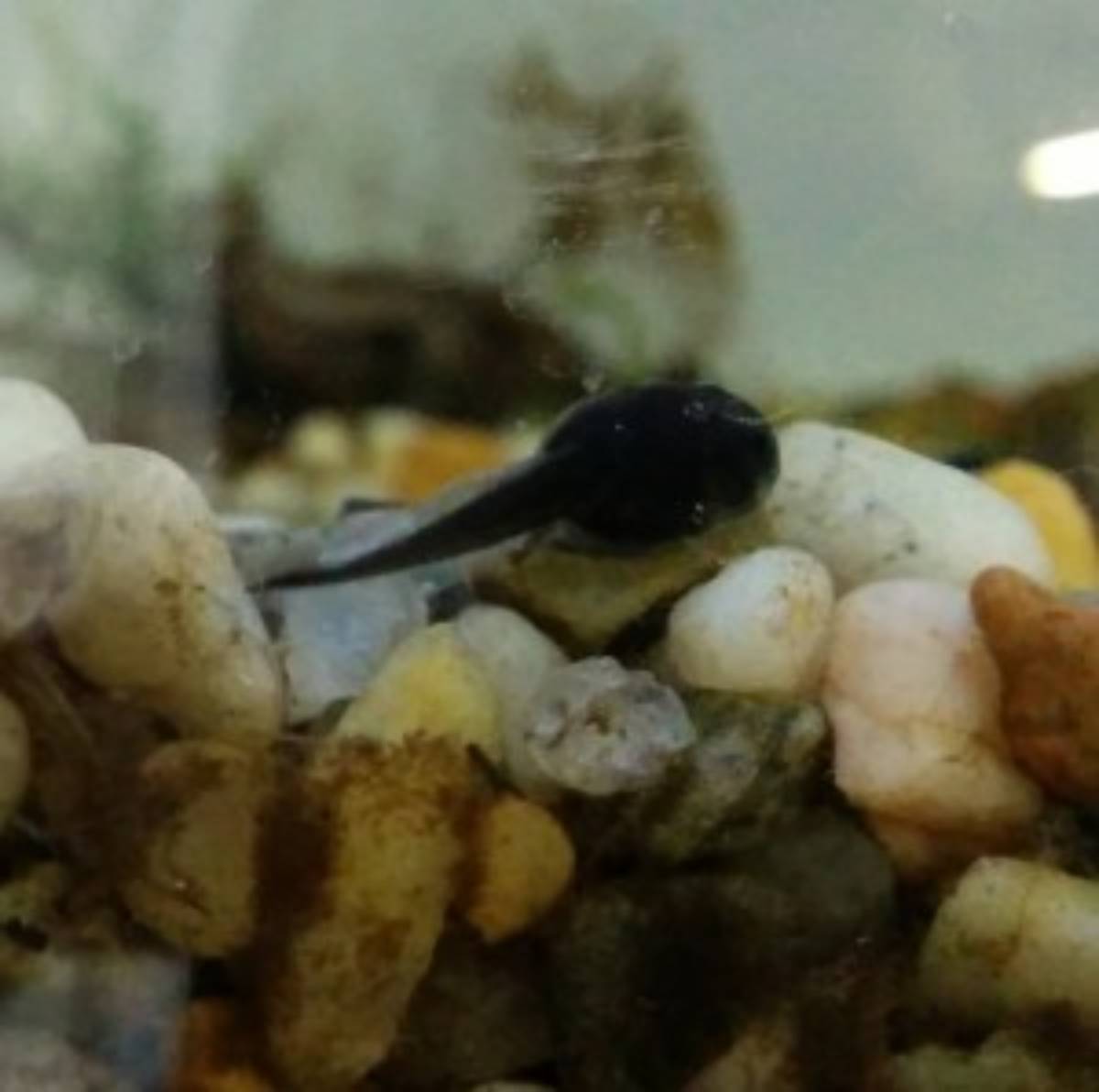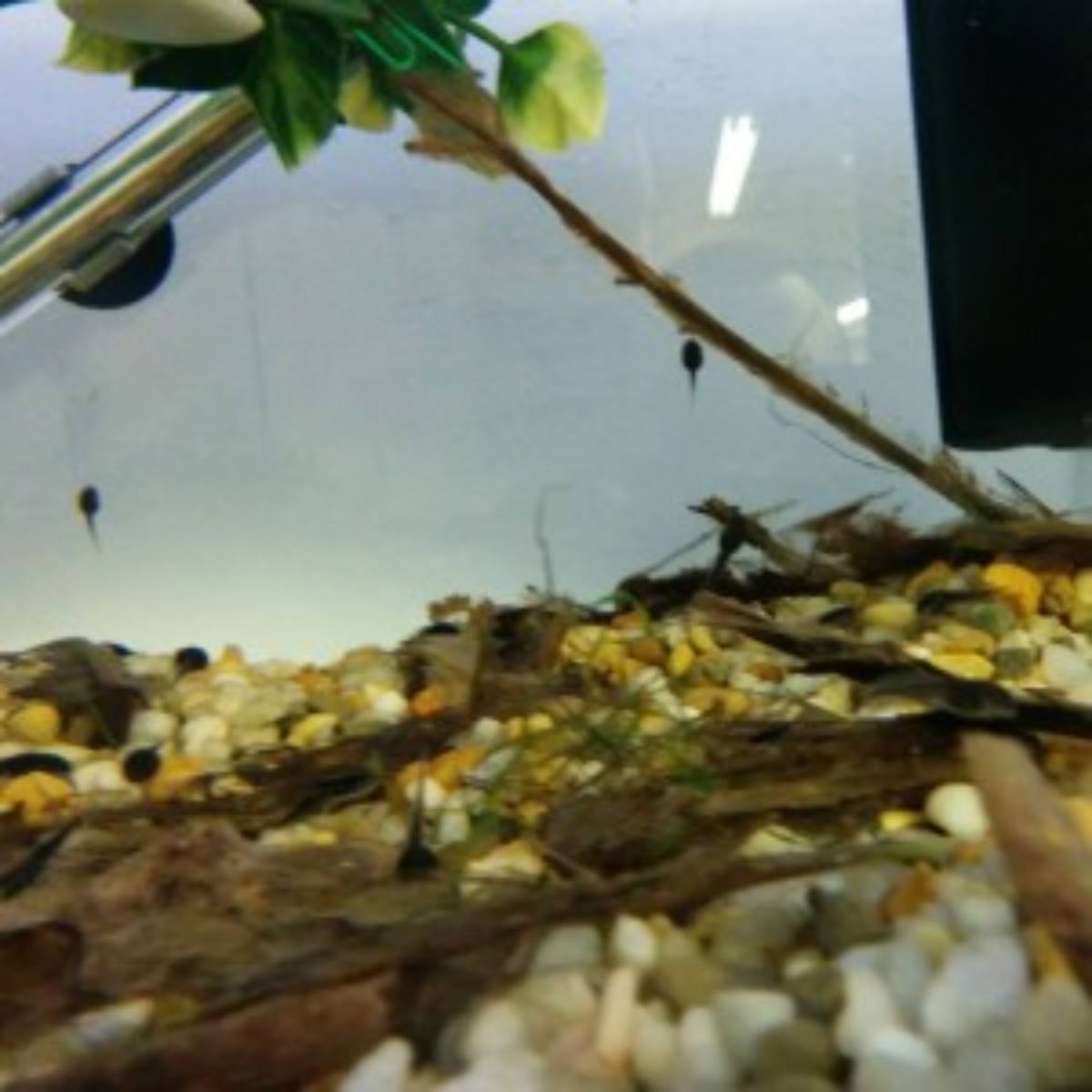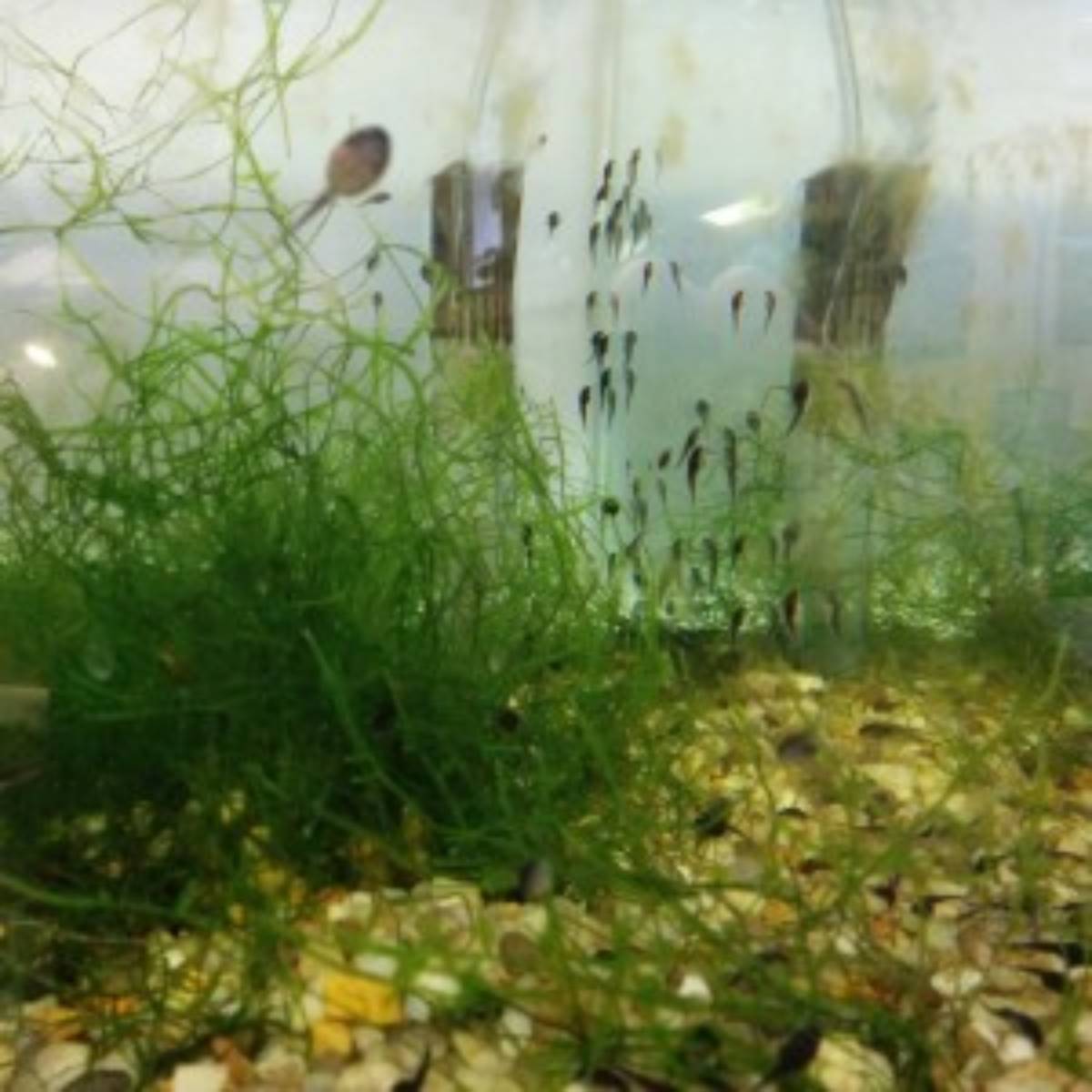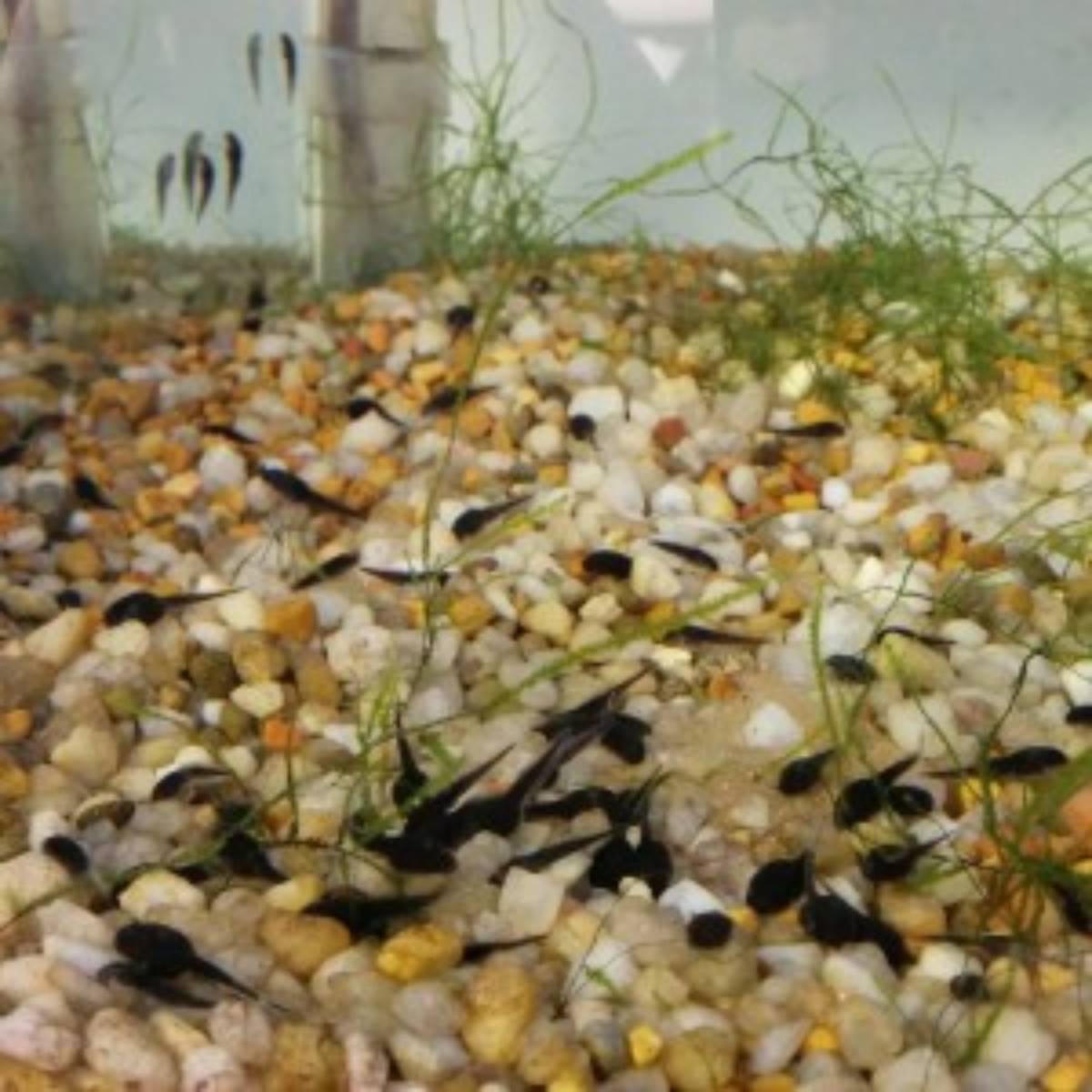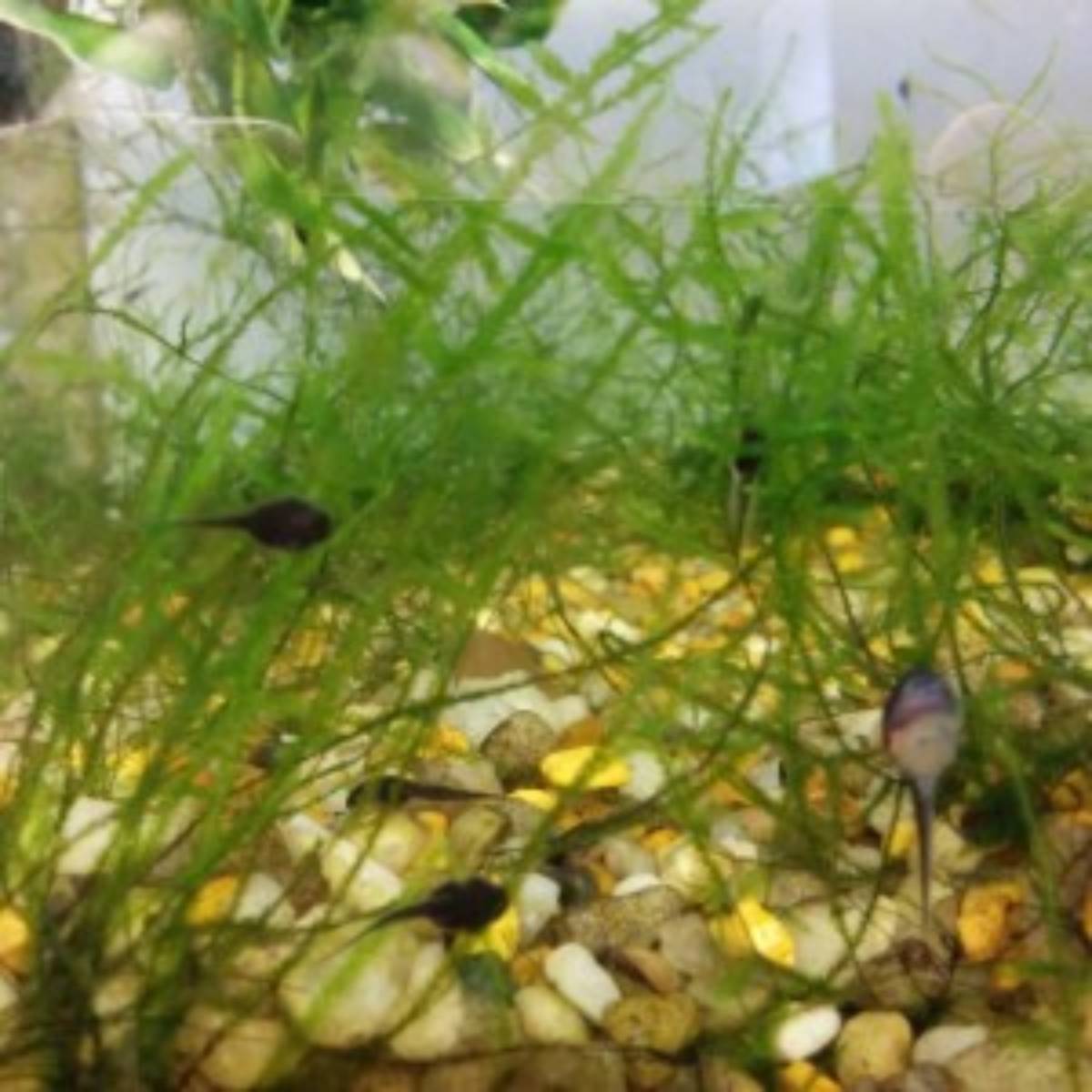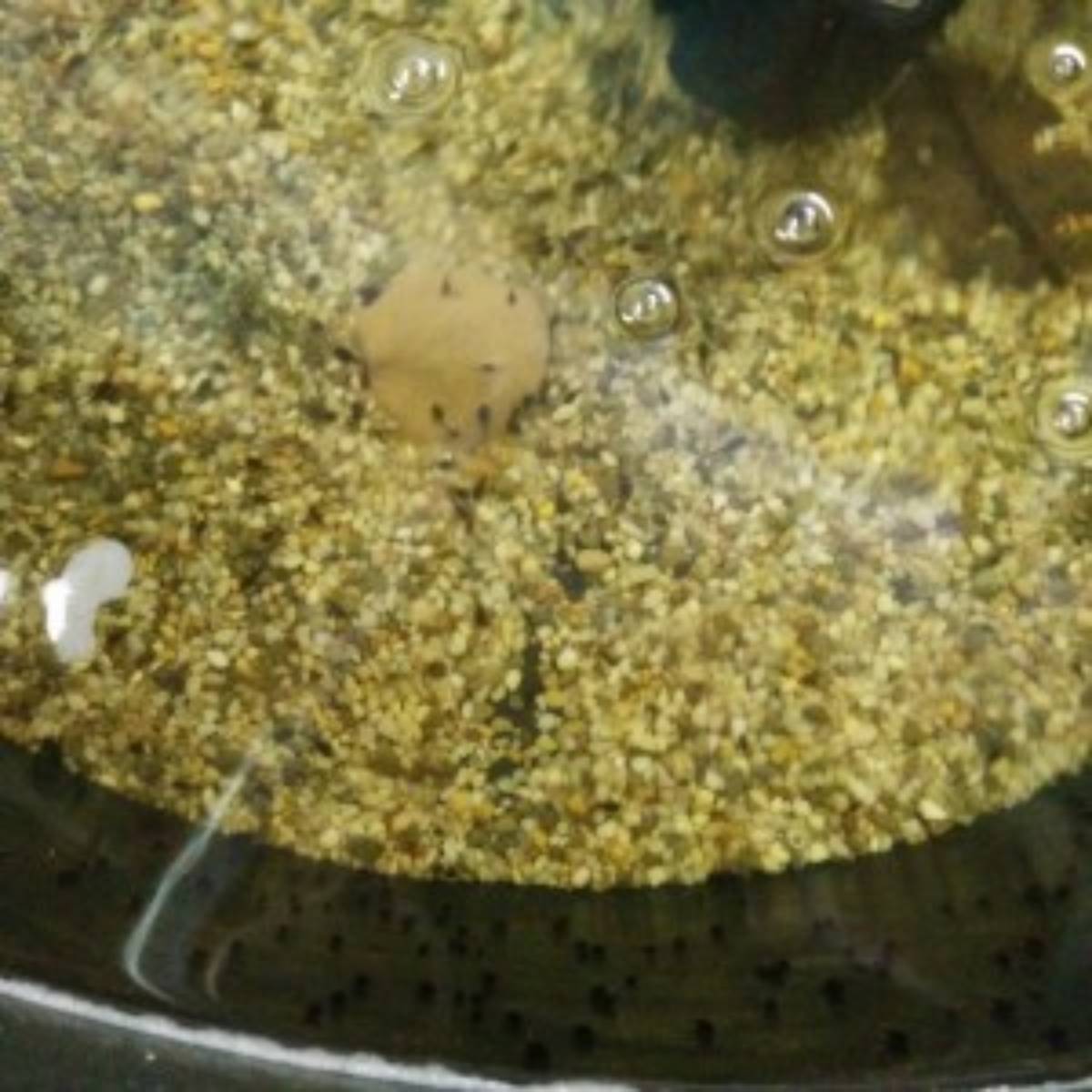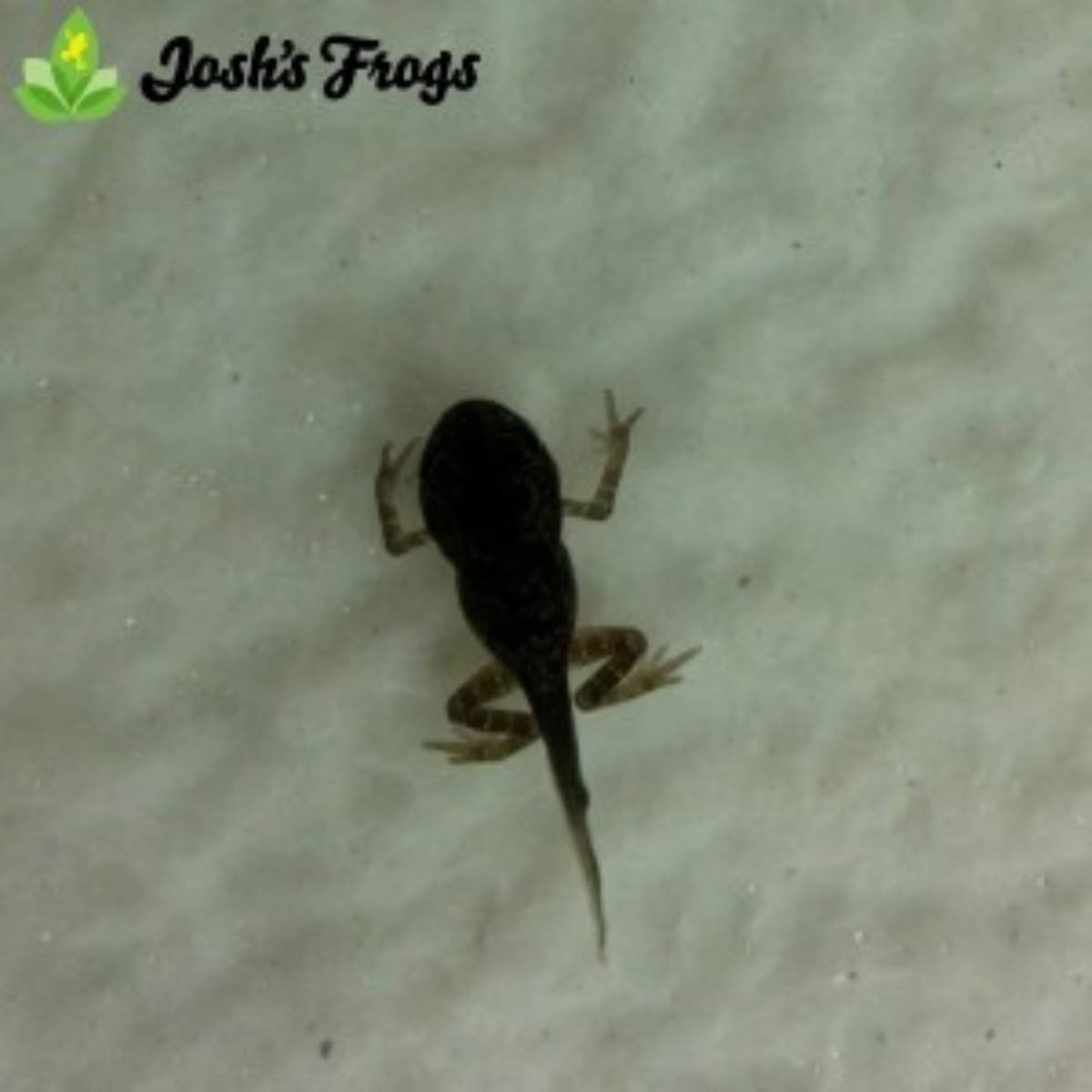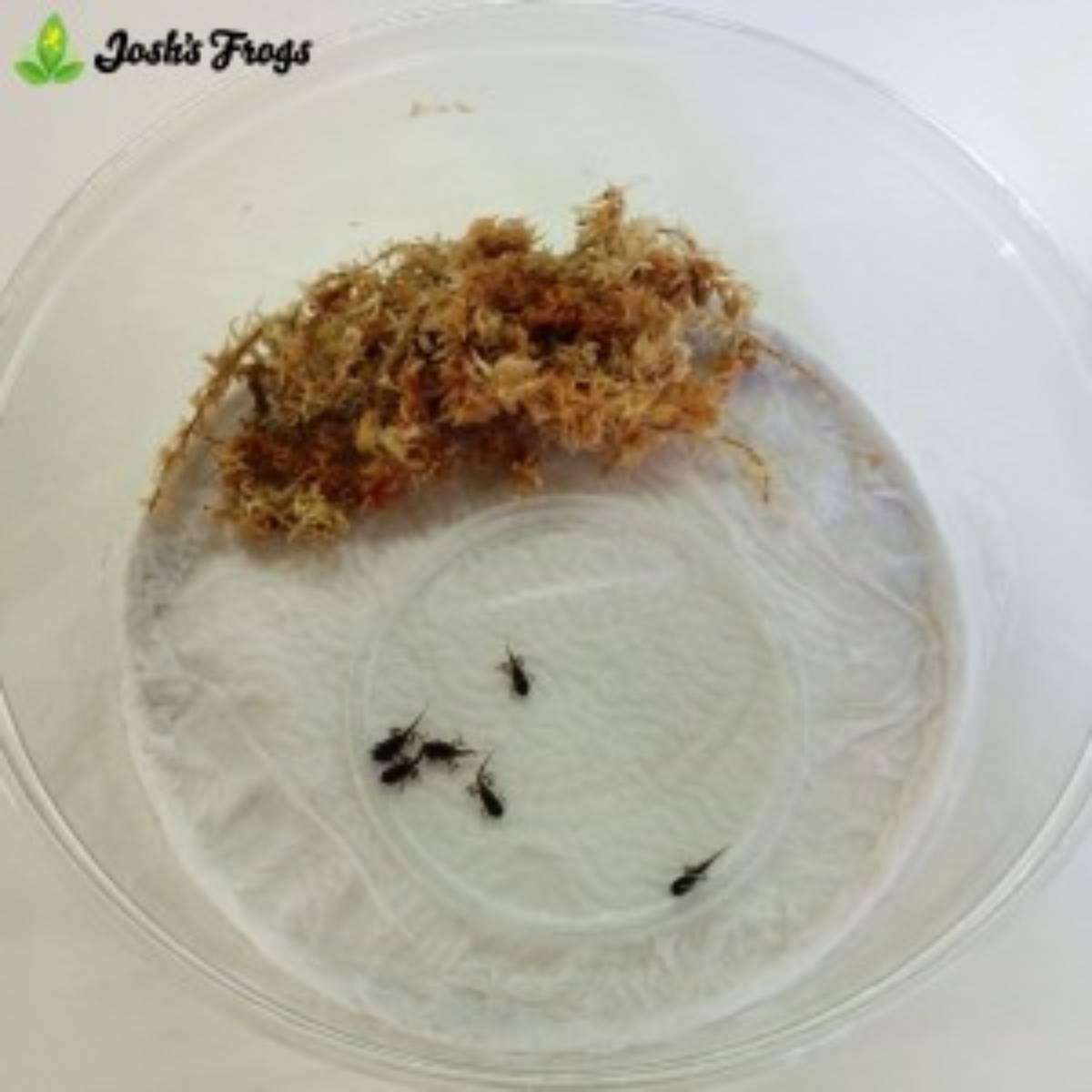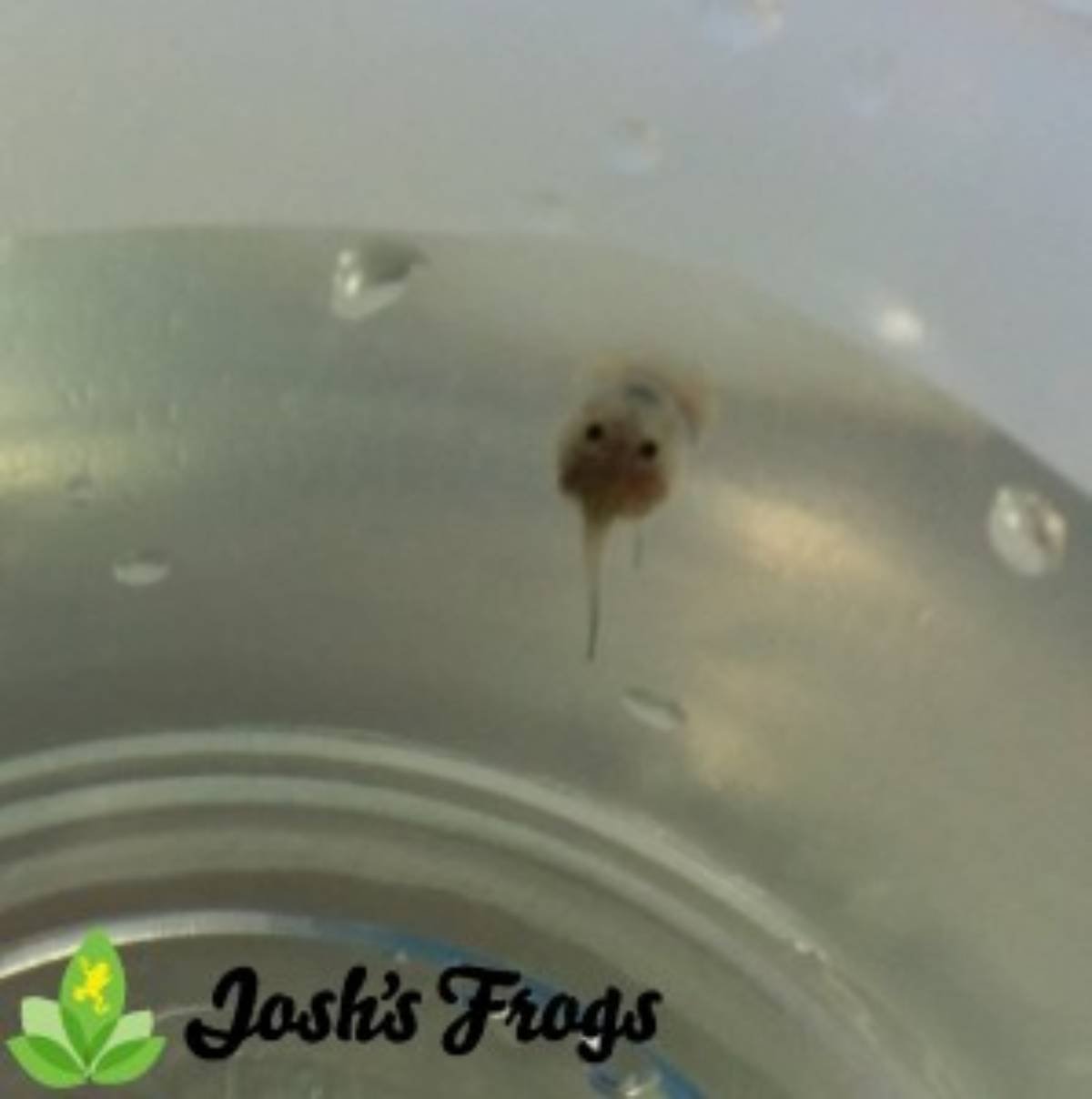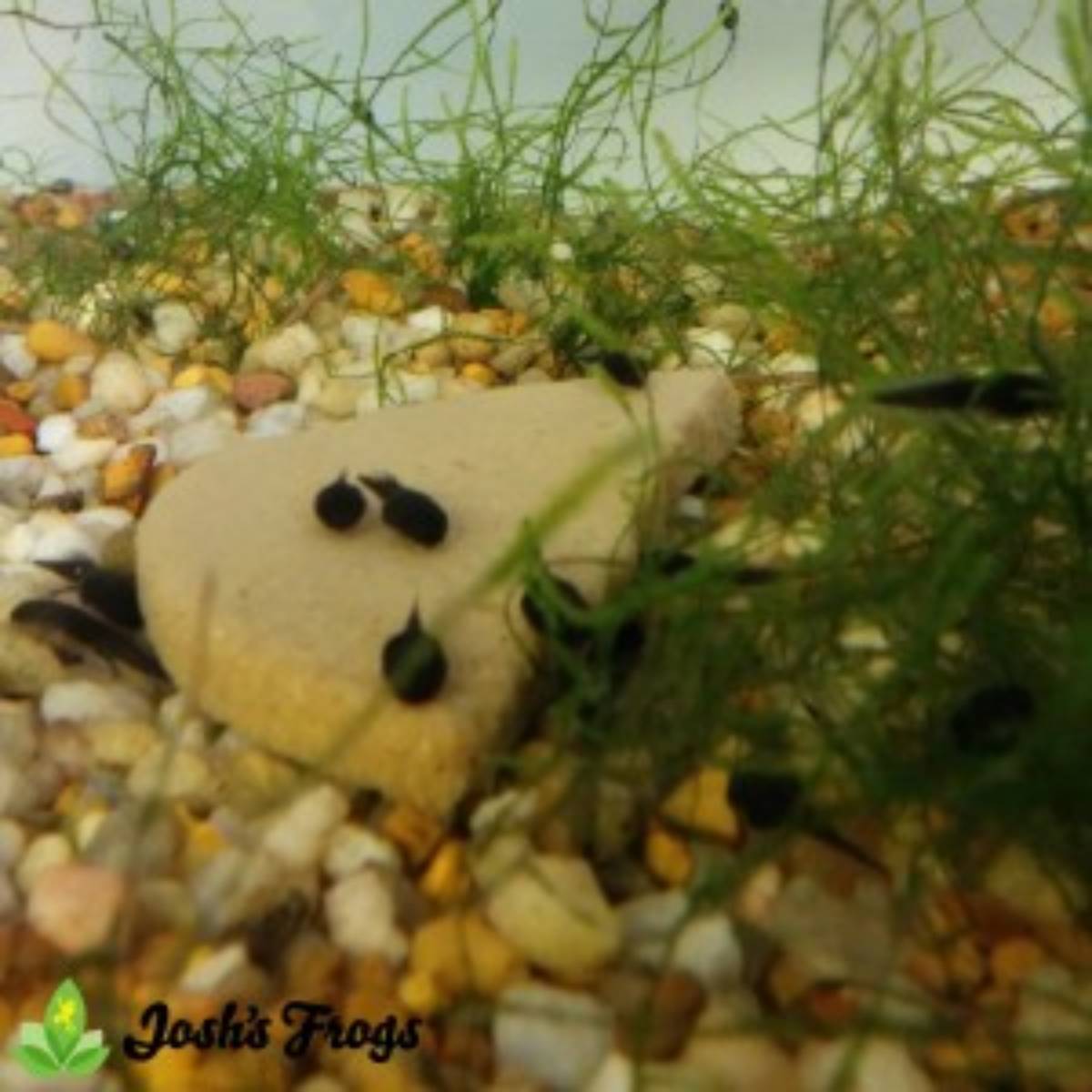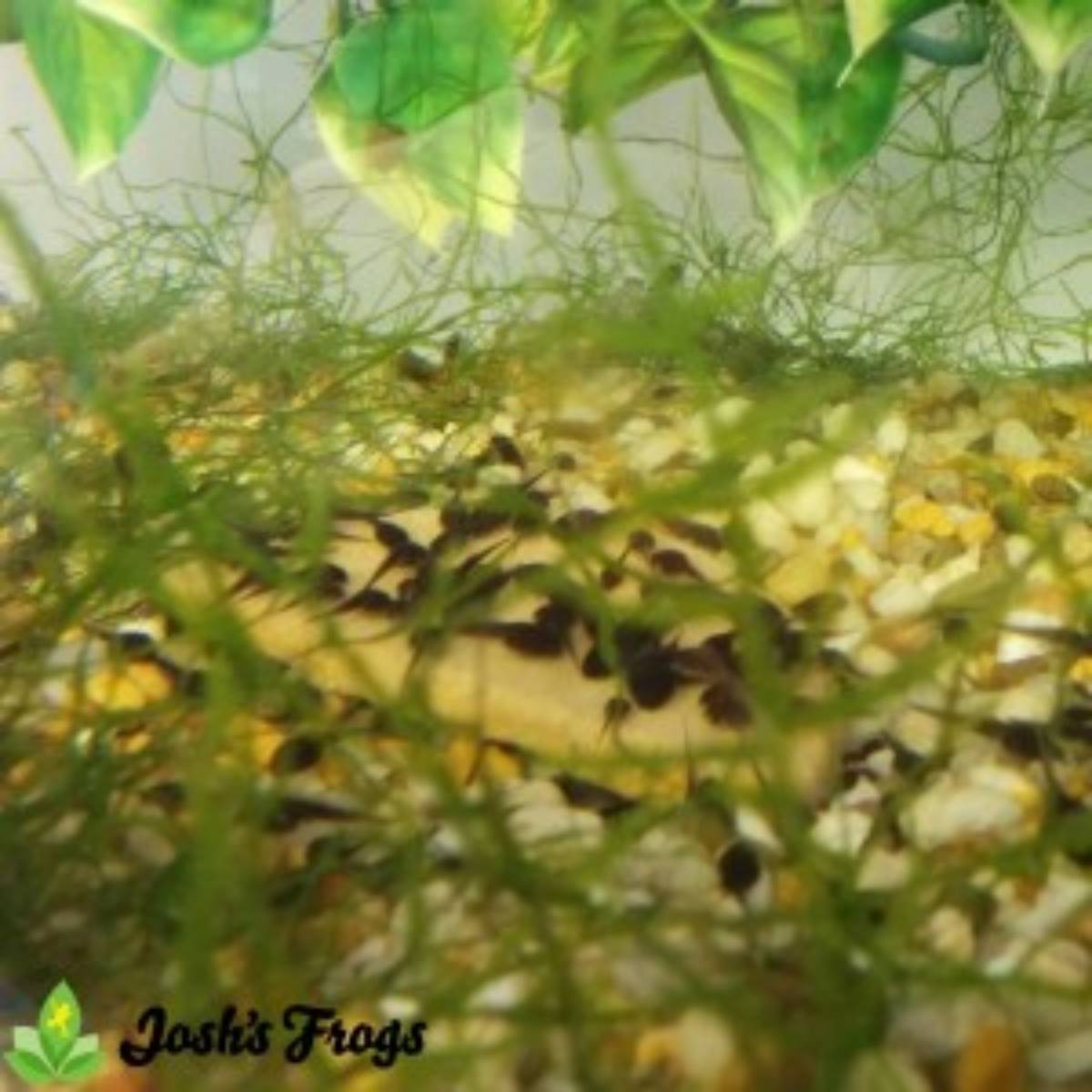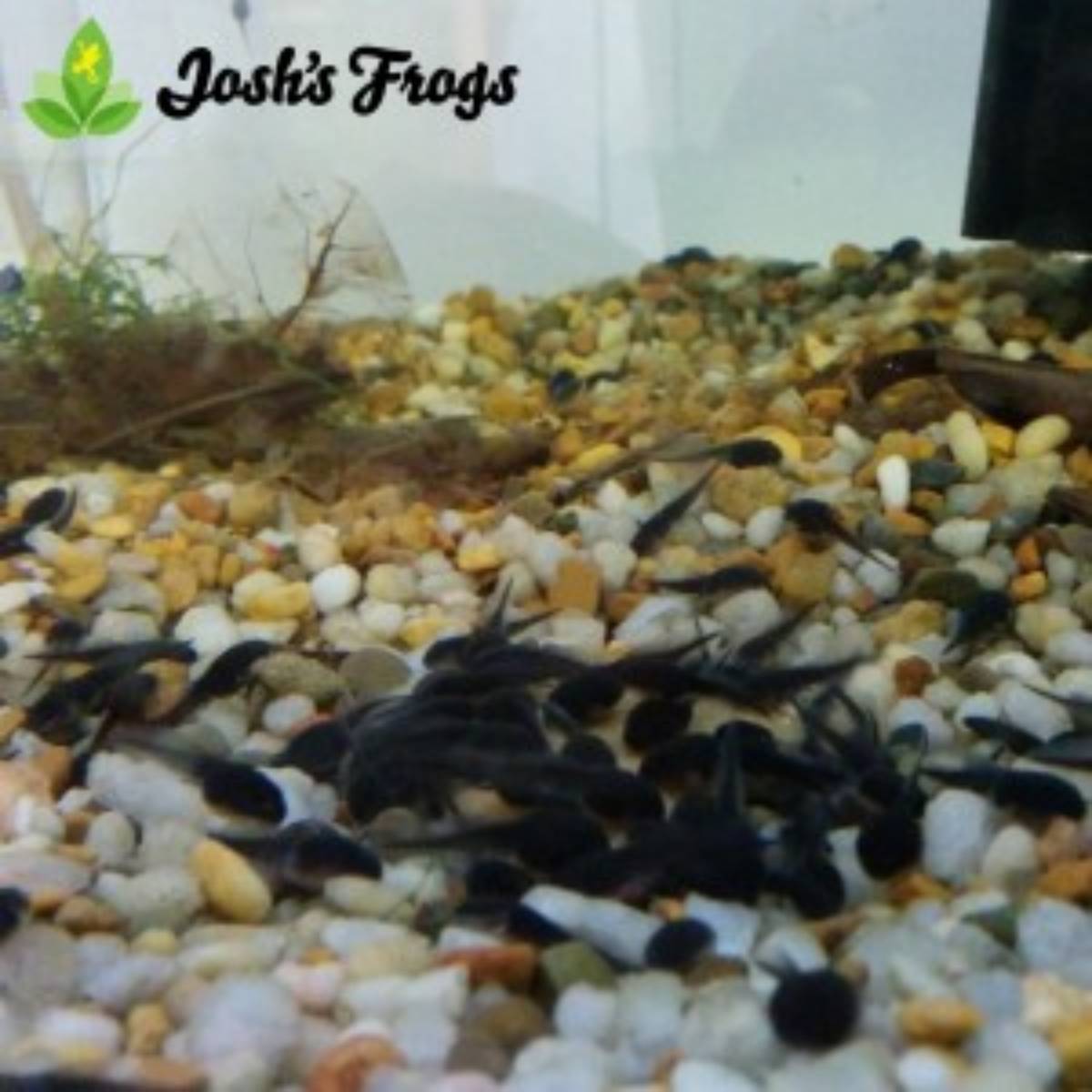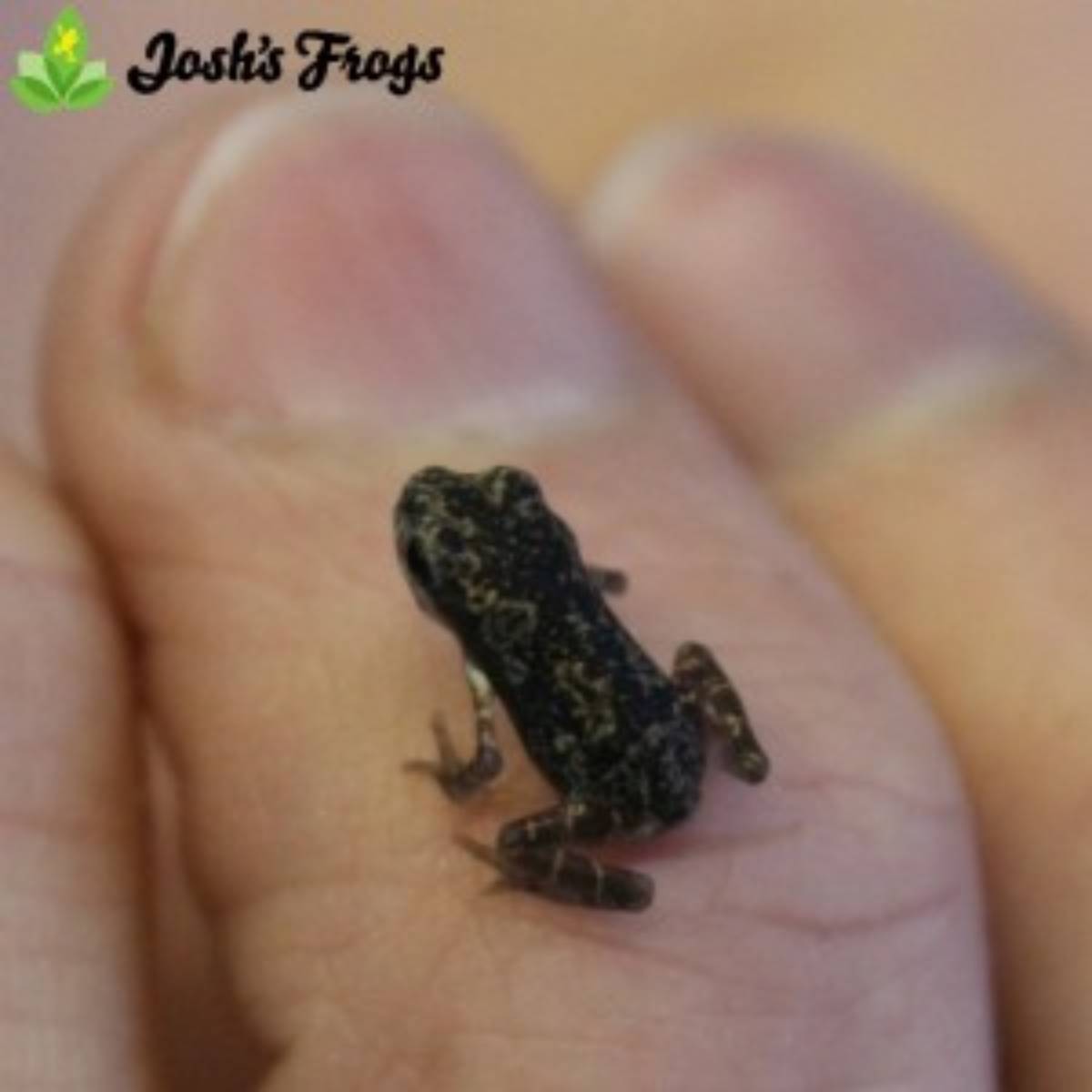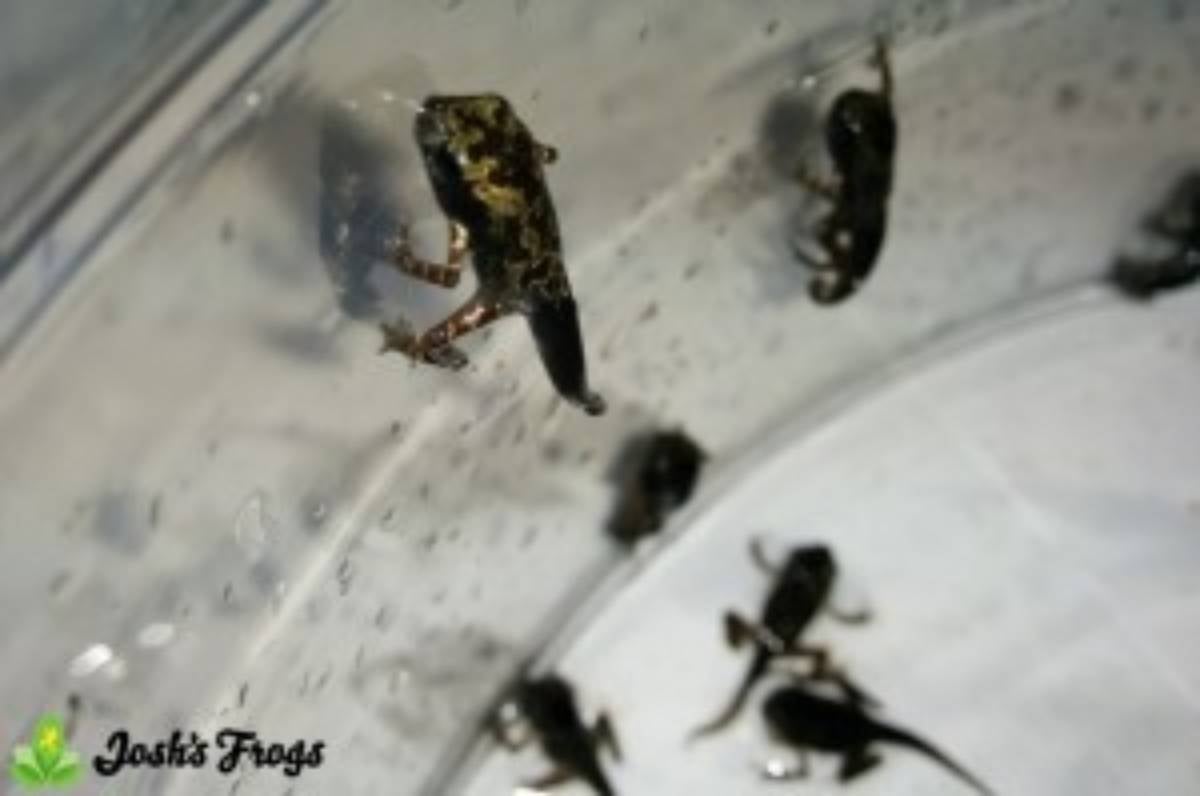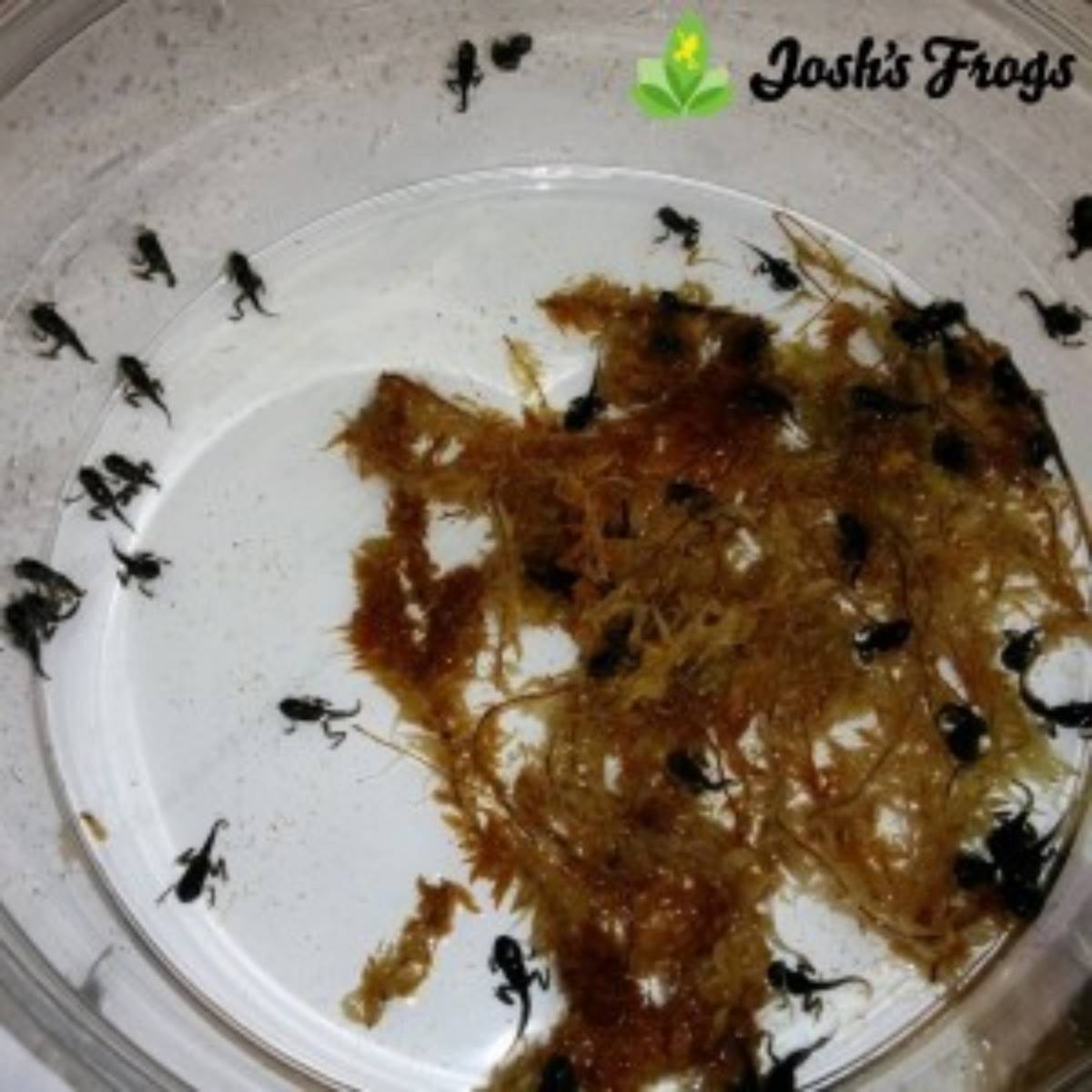Josh's Frogs
Yellow Spotted Climbing Toad Breeding: A Bit of Luck & a Lot of Hard Work
Rare in the hobby, Josh's Frogs strives to produce healthy, captive-bred Yellow Spotted Climbing Toads for the pet trade and reduce demand for wild caught animals.
Due to the overwhelming interest we have had in this species, Josh's Frogs has gone ahead and put together care kits for Yellow Spotted Climbing Toads so you can get everything you need to take proper care of them! We also have written a Care Sheet, as well as made a page on our website for where the Yellow Spotted Climbing Toads will be sold, and you can sign up to be notified when they are available if they're not currently in stock.
On Friday, March 14th, 2014, Josh, Trish, Mike, Lauren, and myself were in Chicago setting up for the Tinley Park NARBC show. Our Josh's Frogs Tree Frog Expert, Austin, had stayed back in Michigan to tend to the animals. He called me with great news—a pair of yellow spotted climbing toads, which we had placed in the rain chamber 48 hours earlier, were in amplexus and hundreds of eggs were in the water! We had worked with yellow spotted climbing toads for a couple years, and were absolutely thrilled to have had some success breeding this relatively rare toad.
Below is a breeding journal for the yellow spotted climbing toads at Josh's Frogs - make sure to check back frequently for updates!
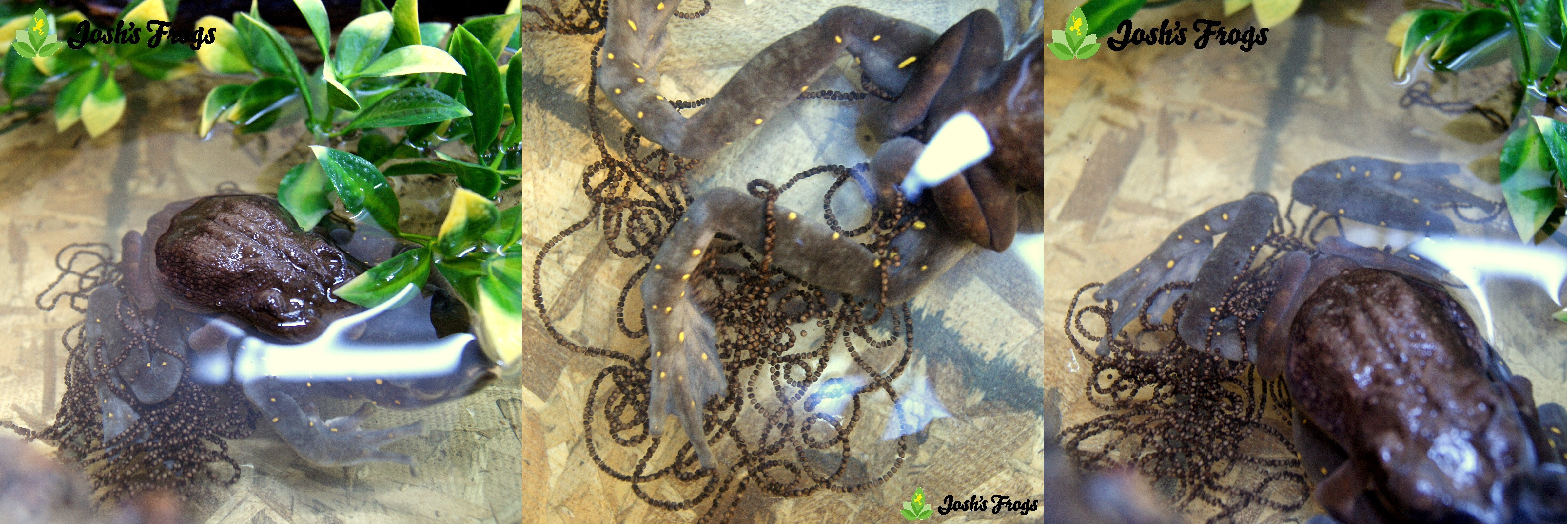
Yellow Spotted Climbing Toads (Rentapia flavomaculata, formerly Pedostibes hosii) are rarely imported from Borneo. They are a very unique species of toad, in that they are very arboreal, and thought to be one of only two true arboreal toads in existence.
Males tend to be brown in coloration, have a very loud call, and measure about 2.5 - 3 inches in length. Females are a bright turquoise/blue color, with yellow spots visible during the breeding season, and measure about 1.5 times the length of the males. Josh's Frogs had originally acquired what we thought was a 2.1 group (later confirmed to be 3.0, with one very large male!) in 2012, and added 4.2 to our collection in early 2013.
Several hundred, if not over a thousand eggs were laid, of which about 3/4 developed into very small, apparently primitive tadpoles within 48 hours. Early on, these tadpoles sunk to the bottom of the rain chamber, and did not even appear to have eyes or a mouth! For the first several days, until the tadpoles developed more and became free swimming, we performed 1/2 water changes every 4 hours, and removed unfertilized eggs with a turkey baster. By Wednesday (3/19/2014), the tadpoles were starting to move of their own accord, and congregated along the edges of the tank. A bit of Sera Micron was offered daily.
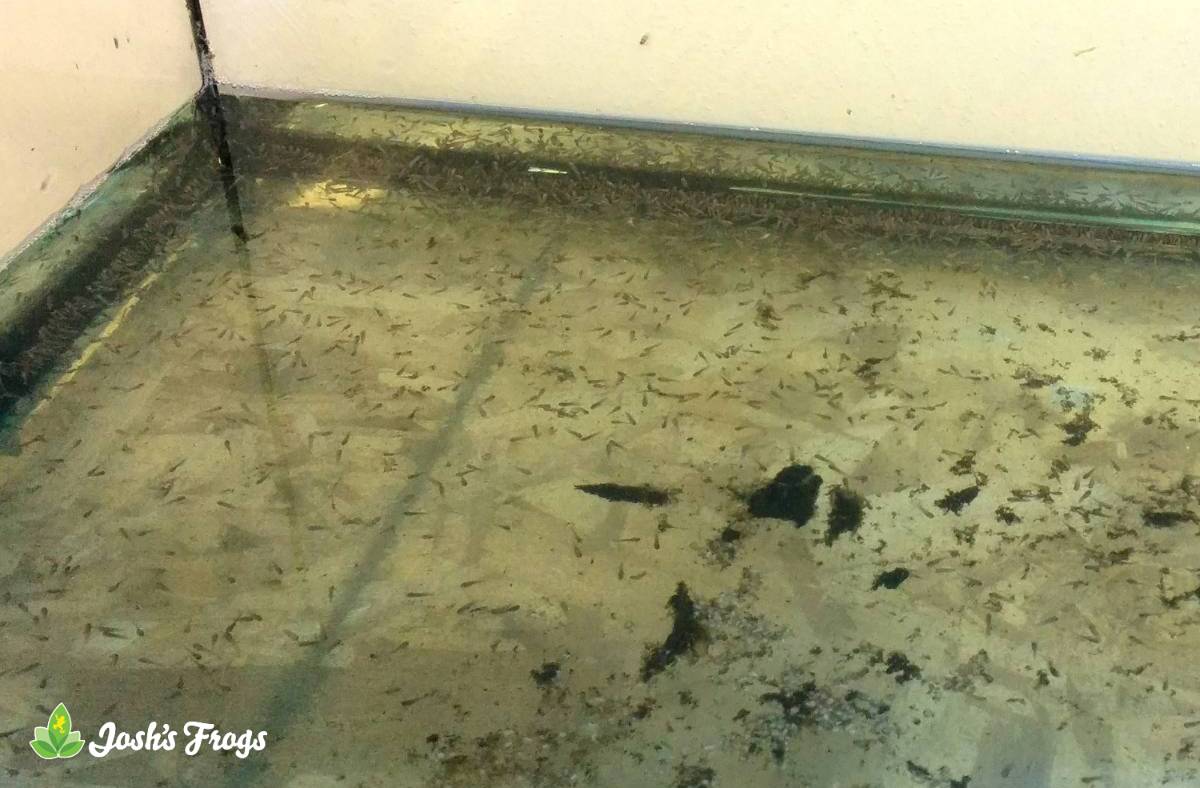
Now that they were mobile, it was time to think about rearing tanks for the tadpoles. At Josh's Frogs, we use an aquarium with a basic under-gravel filter, a 1 inch gravel bed, and a sponge filter for rearing tree frog/reed frog/bumble bee toad tadpoles, and thought this would be appropriate for yellow spotted climbing toad larvae.
Based on further research, I came across references that yellow spotted climbing toads may lay eggs in jungle ponds/pools, or even in streams! We had 3 fully-cycled 40B aquaria at our disposal, and decided to try out different rearing methods, based on what the research turned out.
Rearing Tank # 1 - Jungle Pond Tank (40B with under-gravel filter, sponge filter, cork bark, java moss, and Indian almond leaves)

With a lower pH, tannin rich water, and plenty of extra surface area for grazing provided by the Indian almond leaves, this replicates a jungle pond or pool.
Rearing Tank # 2 - Josh's Frogs Tank (40B with under-gravel filter, sponge filter, java moss)
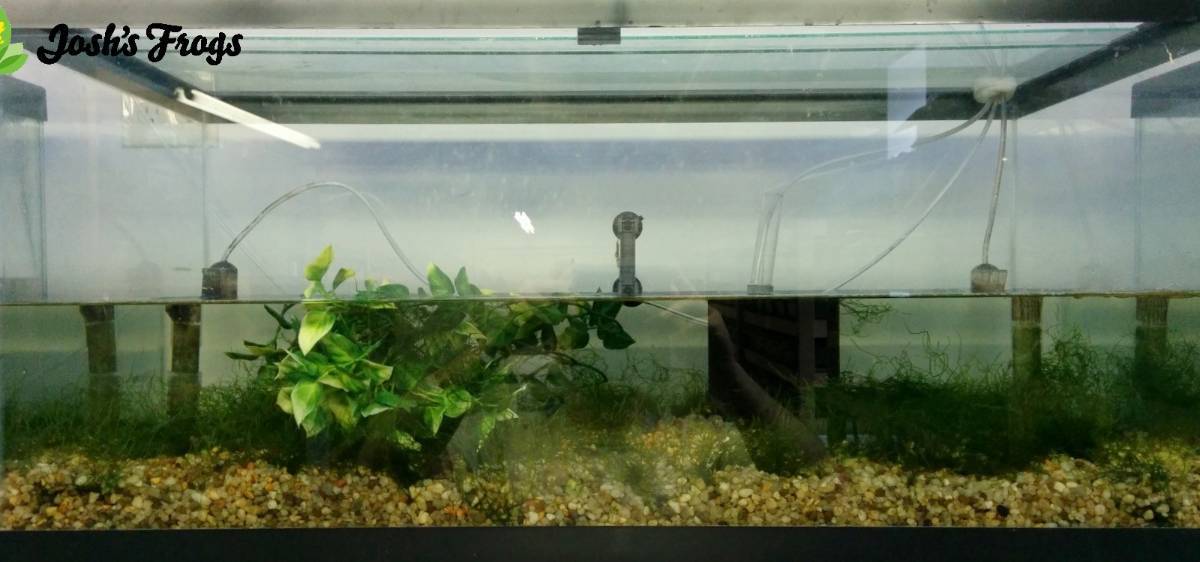
This is the preferred method of communally raising tadpoles we've adopted at Josh's Frogs. It's worked great with red eye tree frogs, amazon milk frogs, several species of reed frogs, and bumble bee toads - but will it work well with yellow spotted climbing toads?
Rearing Tank # 3 - Stream Tank (40B with under-gravel filter, sponge filter, java moss, and 85 GPH pump)
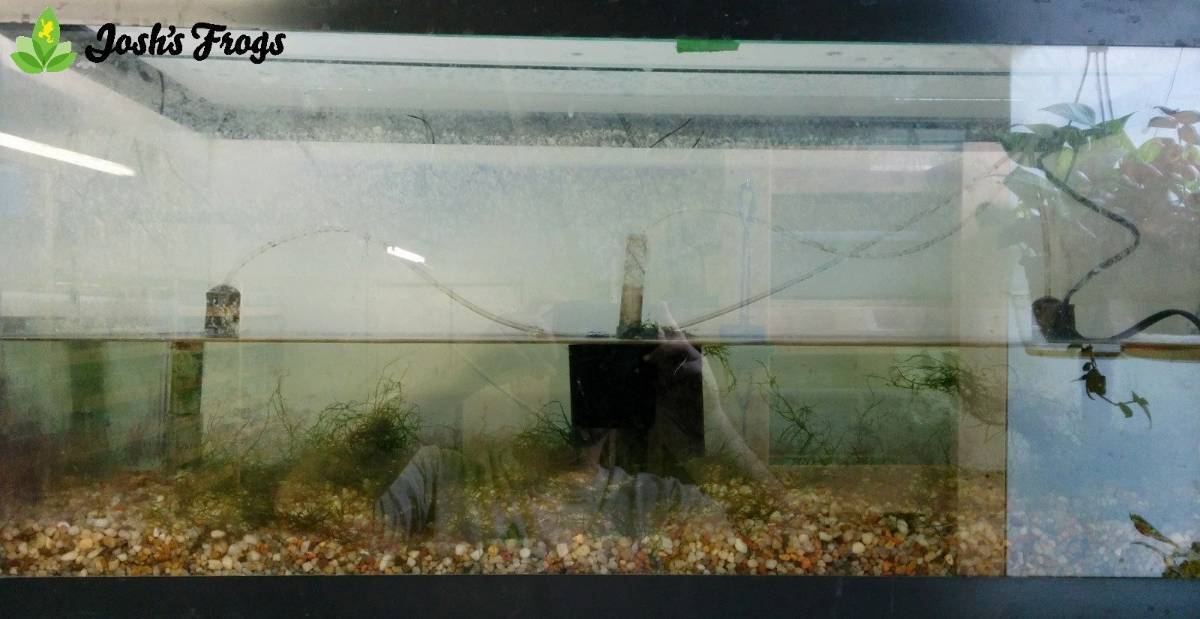
Simulating the high oxygen environment of a swift moving stream, this rearing tank should replicate the environment that yellow spotted climbing toads reportedly seek out for breeding in the wild.
Acclimating Yellow Spotted Climbing Toad Tadpoles
After the 3 different rearing tanks were assembled on Thursday (they had already been up and running with a mature gravel bed and sponge filter for several months), it was time to acclimate some YSCT tadpoles to their new digs. Due to the fact we hadn't done this before, some tadpoles were acclimated on Thursday, followed by another batch on Friday, just to make sure at least one batch of tadpoles was mobile enough for permanent housing and transport.
Both batches (3 days and 4 days post-hatch) did well. We visually divided them into 3 approximately equal sized groups, then spent several hours adding tank water to the containers with the tadpoles and the water from the rain chamber, one turkey baster full at a time, every 15 minutes. The tadpoles did not seem negatively impacted by the acclimation technique. Approximately 1,000 tadpoles were introduced into each rearing tank over the 2 day period.
UPDATE: 3/24/2014
The tadpoles have been in their permanent rearing tanks for 3-4 days now, and all appear to be doing well. However, there are some noticeable differences in activity level. Currently, the tadpoles in rearing tank # 3 (the stream tank) are much more active than the other tadpoles, and more evenly distributed throughout the tank.

In rearing tank # 2, the tadpoles seem crowded around the sponge filter and under-gravel filter air diffusers, pointing to a need for higher levels of dissolved oxygen in the water.
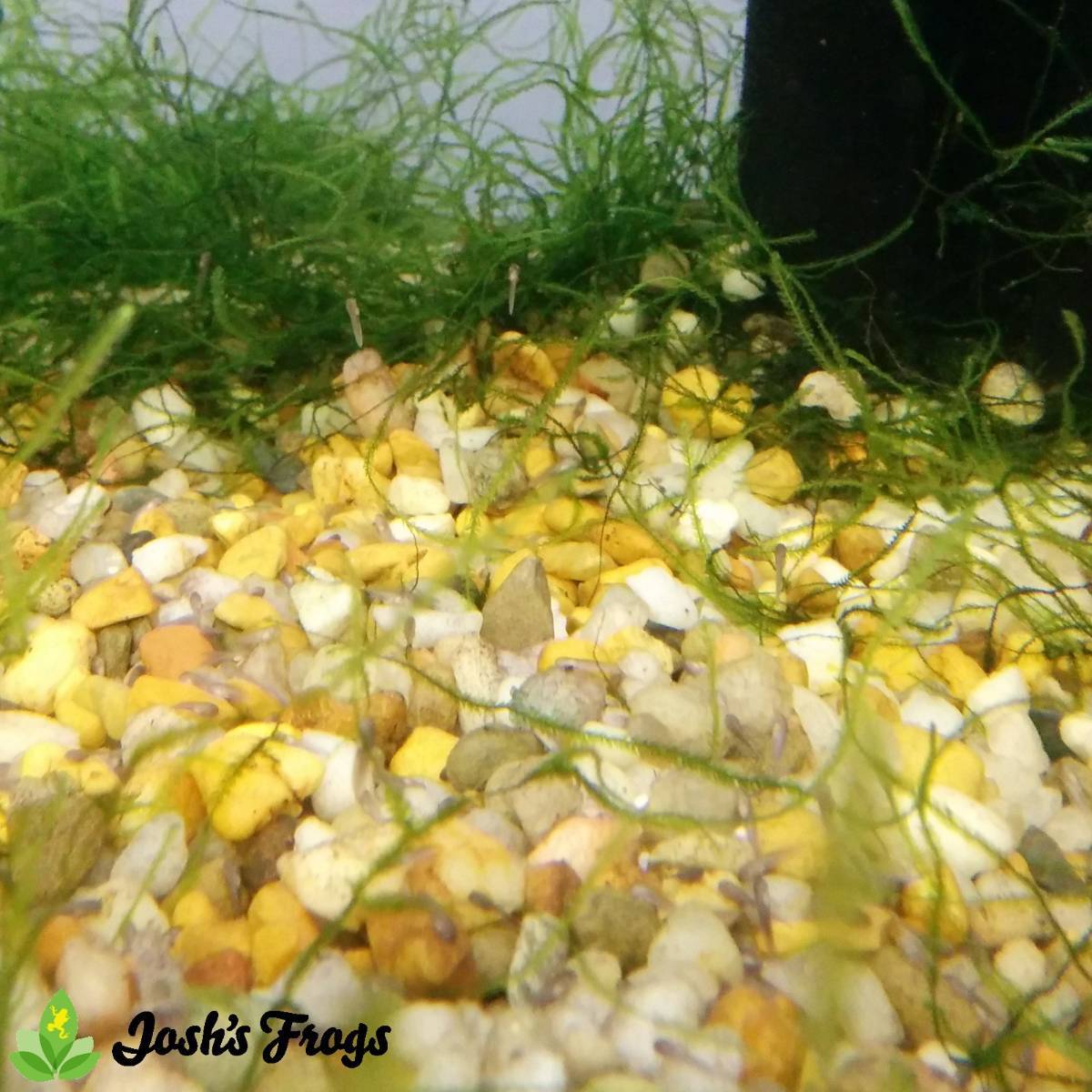
In tank # 1 (the pond tank), tadpoles are actively grazing on Indian almond leaves, but seem more concentrated near oxygen sources.
At this early stage, I would lean towards the stream tank (tank # 3) as the winner. Using these observations, we will construct another 40B as a stream tank, and add cork bark and Indian almond leaves to it, as tannin sources and additional surface area for grazing. There are still about 600 tadpoles in the rain chamber, kept back as reserves just in case the tadpoles in the rearing tank failed to thrive over the weekend. These yellow spotted climbing toad tadpoles will be introduced into the 4th 40B tomorrow.
UPDATE - 3/28/2014
Good news! ALL of the yellow spotted climbing toad tadpoles seem to be growing at an incredible rate, to the point that we're fearful the tadpoles are quickly outgrowing their 40B habitats. So, after a bit of brainstorming, Josh's Frogs set up a 180g cattle trough in the middle of our tadpole room to raise excess tadpoles, and to thin out some of the 40B as they become overcrowded. The 4th batch of YSCT tadpoles, which resided in the rain chamber, are going to be introduced into our indoor pond today.
Here's a picture of the 180 gallon pond, complete with a 500 GPH pump and 300w heater, to maintain water temps at about 74°F. There's also a 1 inch layer of gravel at the bottom, and some leaf litter and java moss at the bottom of the pond. We'll be adding some live blackworms and more aquatic plants next week.
The 40B tanks are still going great - just looking a little overcrowded. We'll be removing some of the tadpoles from the aquaria next week, and adding them to the 180 gallon pond. Josh's Frogs plans to keep a few dozen tadpoles in each tank, to allow our rearing conditions experiment to continue, and to serve as "backups" in case something happens with any of the other groups of tadpoles.
Tadpole Rearing Tank # 1 (under-gravel filter, sponge filter, java moss, Indian almond leaves, high tannin levels). Tadpoles growing like weeds. At this point, they've almost completely cleaned all algae off of the glass. The tadpoles are close to 3 times the size they were last week!
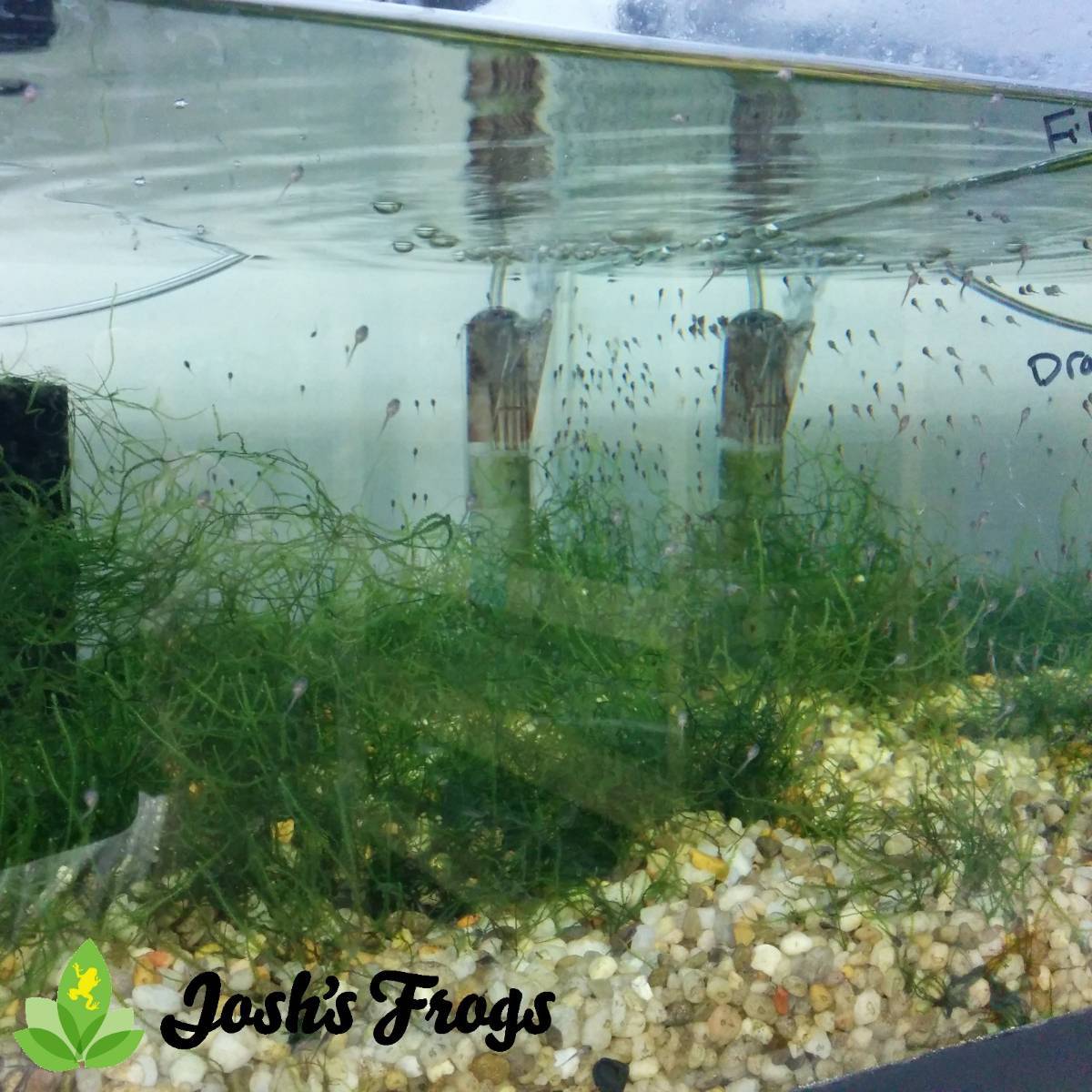
Tadpole Rearing Tank # 2 (under-gravel filter, sponge filter, java moss). The tadpoles are the smallest out of the group, but have still doubled in size since last week. As they grow, the tadpoles are becoming much more active.
Tadpole Rearing Tank # 3 (under-gravel filter, sponge filter, powerhead, java moss). This rearing tank seems to have the best results. The tadpoles are a bit larger than tank #1, and much more active. These tadpoles also seem to eat and grow much faster, lending credit to the reports that yellow spotted climbing toads breed in highly oxygenated streams.
UPDATE - 4/2/2014
So far, the tadpoles are doing really, really well. We've had to start feeding them 2 times a day, and are increasing the water volume in the aquaria to counter the increase in organic wastes. Otherwise, the tadpoles seem to be continuing to do as well as they were before, with rearing tank #3 in the lead, closely followed by #1, then #2 lagging behind. We have not experienced any mass die offs so far.
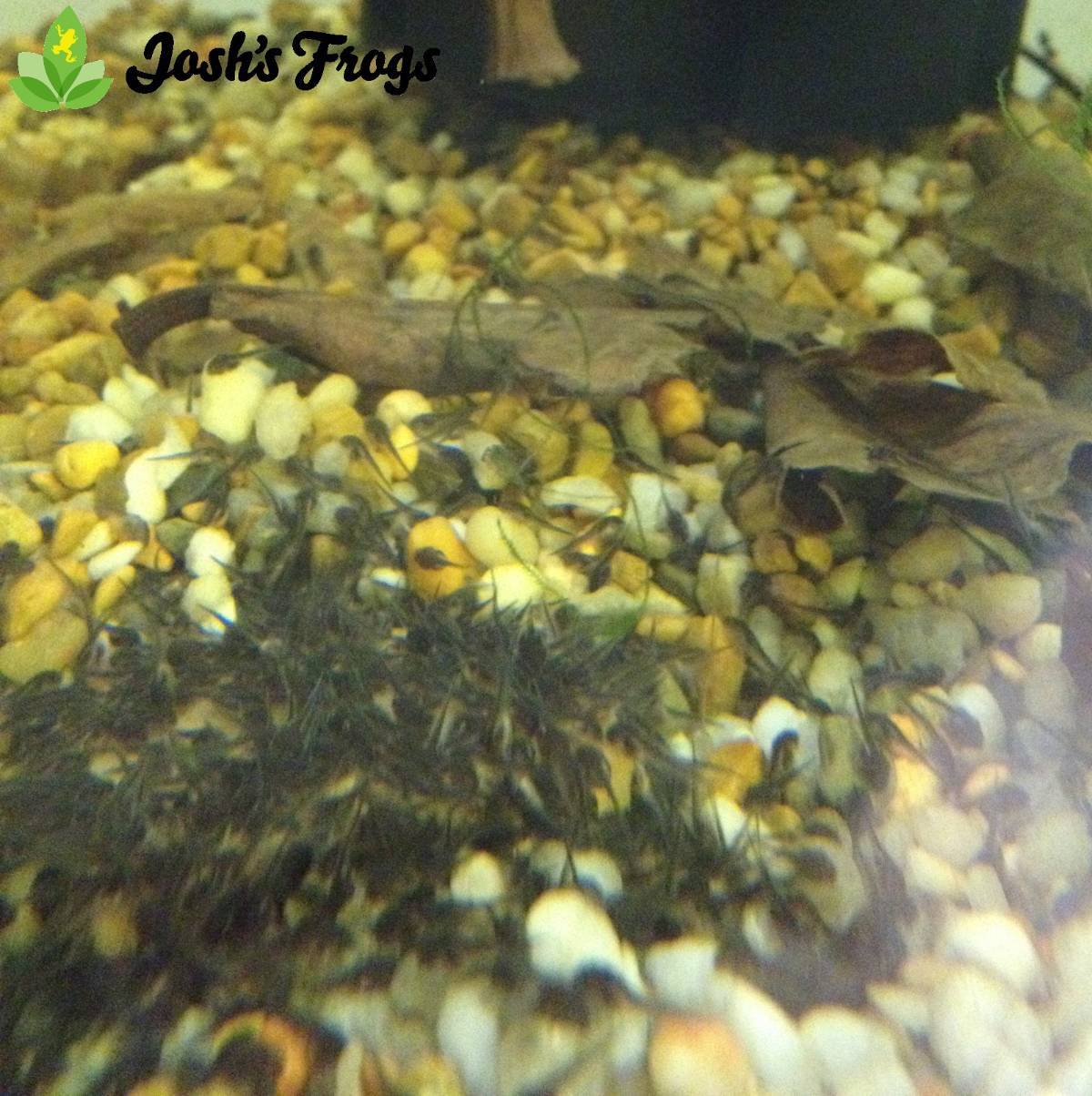
We've also modified a 180 gallon cattle trough to use as a pond, as it's becoming apparent that 4 40g aquaria are simply not going to cut it. Using a bucket, a 350 GPH pump, polyester filter batting, and a bit of hose, we've rigged a basic filtration system to keep the water moving and oxygenated. The pond is also plumbed directly into a floor drain, making large frequent water changes much easier. We're currently doing a 30-40 gallon water change daily.
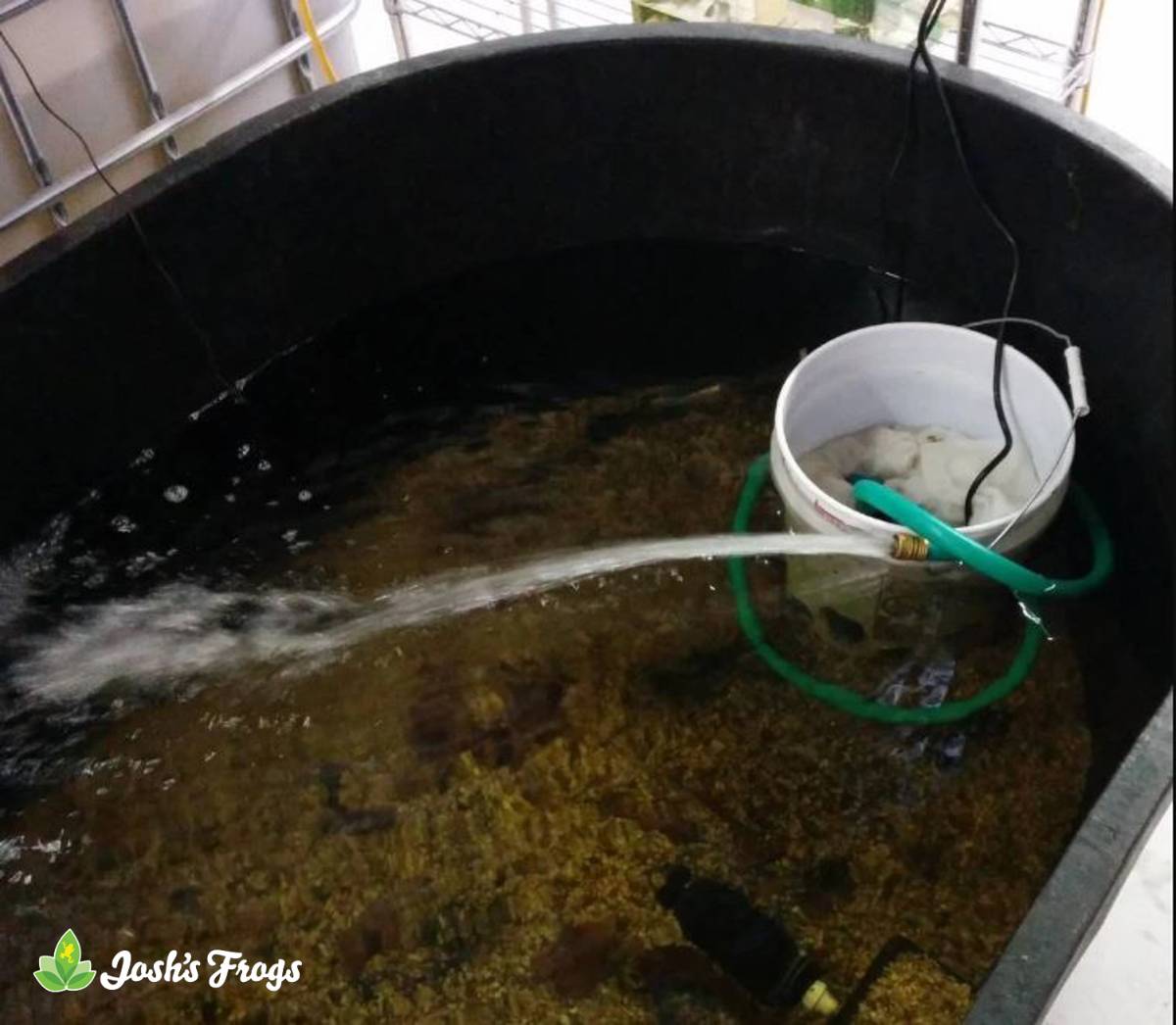
As the tadpoles grow and become more crowded in the 40B aquaria, we're moving large groups of them into the pond where There's more space (and hopefully better water quality). Our plan is to end up with a few dozen tadpoles in each 40b aquaria, to serve as backups and to keep the tadpole rearing conditions experiment going. Below, a few dozen tadpoles float in the pond while acclimating.
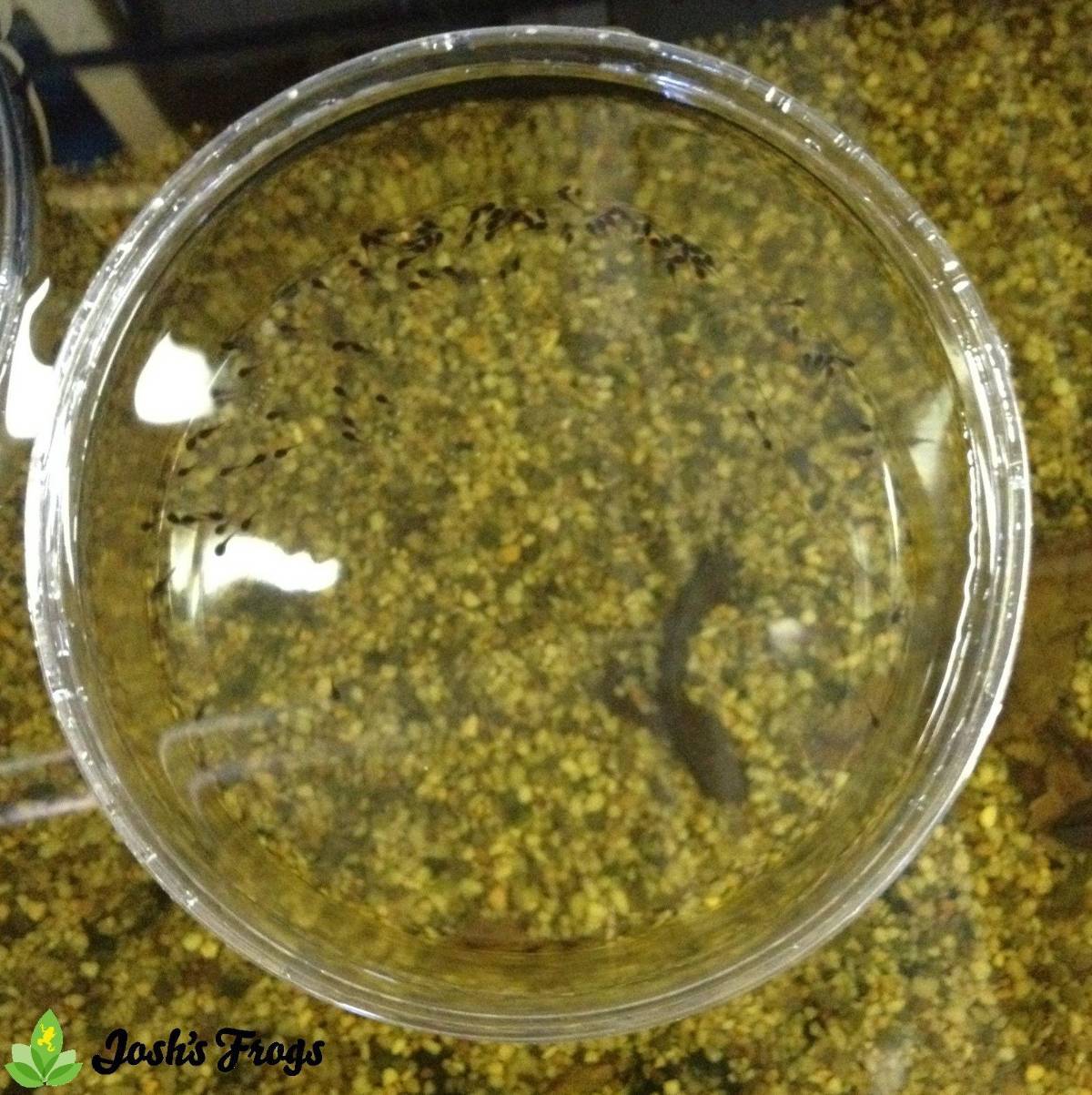
UPDATE: 4/9/2014
We had our first die-off of tadpoles! While not as large as has been reported by others in the past, we did lose around 40-50 tadpoles out of rearing tank # 1. Over the weekend, the tank was accidentally allowed to overflow during a water change. Our employee caught it before any tadpoles floated out, but it resulting in a water change about 3 times what we've been doing! Over the next couple of days, some tadpoles died off, but the rest seem strong as ever.
Note the lack of tannins in rearing tank # 1. A sudden rise in pH and drop in temperature probably resulted from the large, unintentional water change.
The tadpoles in rearing tank #2 are still the smallest out of everyone, but they are still growing and seeming to do well.
For the aquaria, the tadpoles in rearing tank #3 are the clear winners. They're larger, more active, and have a much larger appetite than the yellow spotted climbing toad tadpoles in any of the other aquaria.
The tadpoles in the 180g pond are thriving! They are nearly twice the size of the tadpoles in rearing tank #2, and continue to put on size. We're removing 1-2o0 tadpoles from each rearing tank and introducing them into the pond every week to prevent overcrowding.
UPDATE: 4/24/2014
So far, the yellow spotted climbing toad tadpoles are continuing to thrive! And, even more exciting news, back legs are visible on some of the tadpoles!
Back legs are visible on some tadpoles in each tank, but appear most in Tank #1 and the pond. After an accidental large water change and a die-off of tadpoles in tank #1 (I'd estimate ~50% of the tadpoles in that tank died), there was a sudden growth spurt in the remaining tadpoles, and they're now the largest out of the tadpoles in the tank, outpacing tank #3 and about the same as the pond.
This leads me to believe that water volume (and most likely water quality) are vitally important to the tadpoles, much more so than other anurans we've bred at Josh's Frogs. The tadpoles in Tank #2 and Tank #3 continue to grow, as well. Both Tank #1 and the pond were provided with Indian almond leaves, which have definitely been nibbled on by the tadpoles. I'm going to add more leaves to both groups this week. I'm not sure if it helps the tadpoles, but it doesn't hurt!
We've been removing a few hundred tadpoles from each tank every week and adding them to the pond, as the tadpoles grow and the tanks become crowded. Tank #2 is pictured below, as is Tank # 3 below that.
In each tank (and the pond), there is a drastic difference in size among the tadpoles. This lends credit to the literary claims that some toadlets seem to morph out over a 2-3 month period, and not all at once.
I'd still say the tadpoles being reared in the pond are doing the best by far. The large water volume and better filtration seem to be helping out. Loads of tadpoles can be seen constantly swimming around and chowing down on biofilm on the sides of the pond.
UPDATE: 4/29/2014
Exciting news! Josh's Frogs has had their first ever yellow spotted climbing toads morph today! 6 came out, followed by 7 the next day. Looking at the tadpoles, I think we'll have several hundred coming out over the next few weeks!
The yellow spotted climbing toadlets (heh) look strong, and develop quite a bit of color and pattern a couple days before leaving the water.
There is NO reliable information out there on rearing young yellow spotted climbing toad offspring, so we're treating them just like we rear our captive bred bumble bee toads based on size and how they behave. They're currently being housed in 128oz containers on damp paper towel, with a handful of sphagnum moss to provide extra humidity and hiding places. We're also using the lid of a deli cup to allow the toadlets to come out of the water on their own.
We still have plenty of tadpoles in the various rearing tanks and ponds, displaying a wide range of sizes and stages of development. All of the tadpoles shown below are of the same age, and the same rearing tank (tank 2):
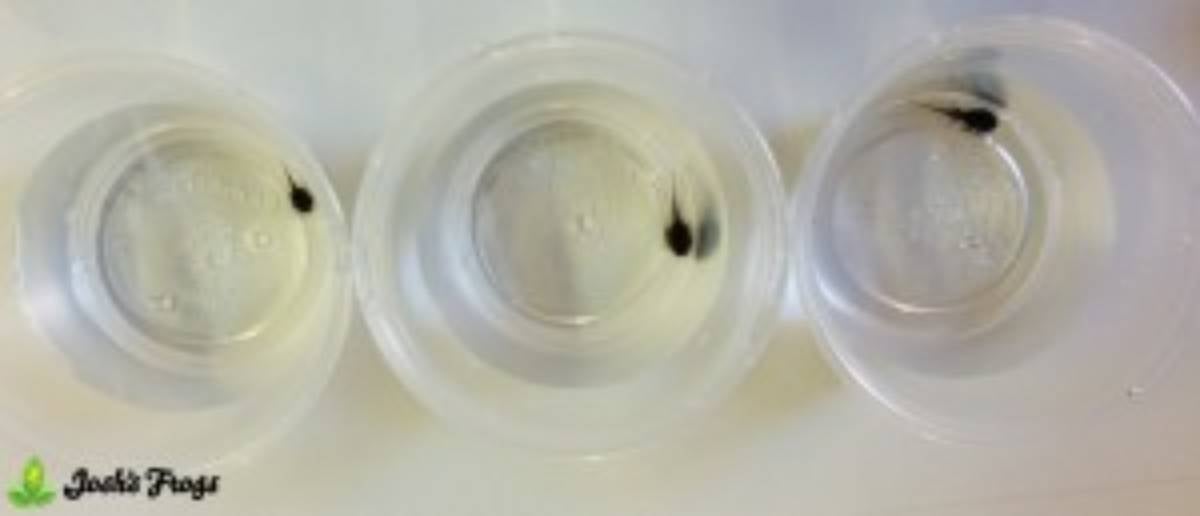 As the tadpoles get larger in size, their intestines are more visible. Here's one full of Repashy Meat Pie:
As the tadpoles get larger in size, their intestines are more visible. Here's one full of Repashy Meat Pie: 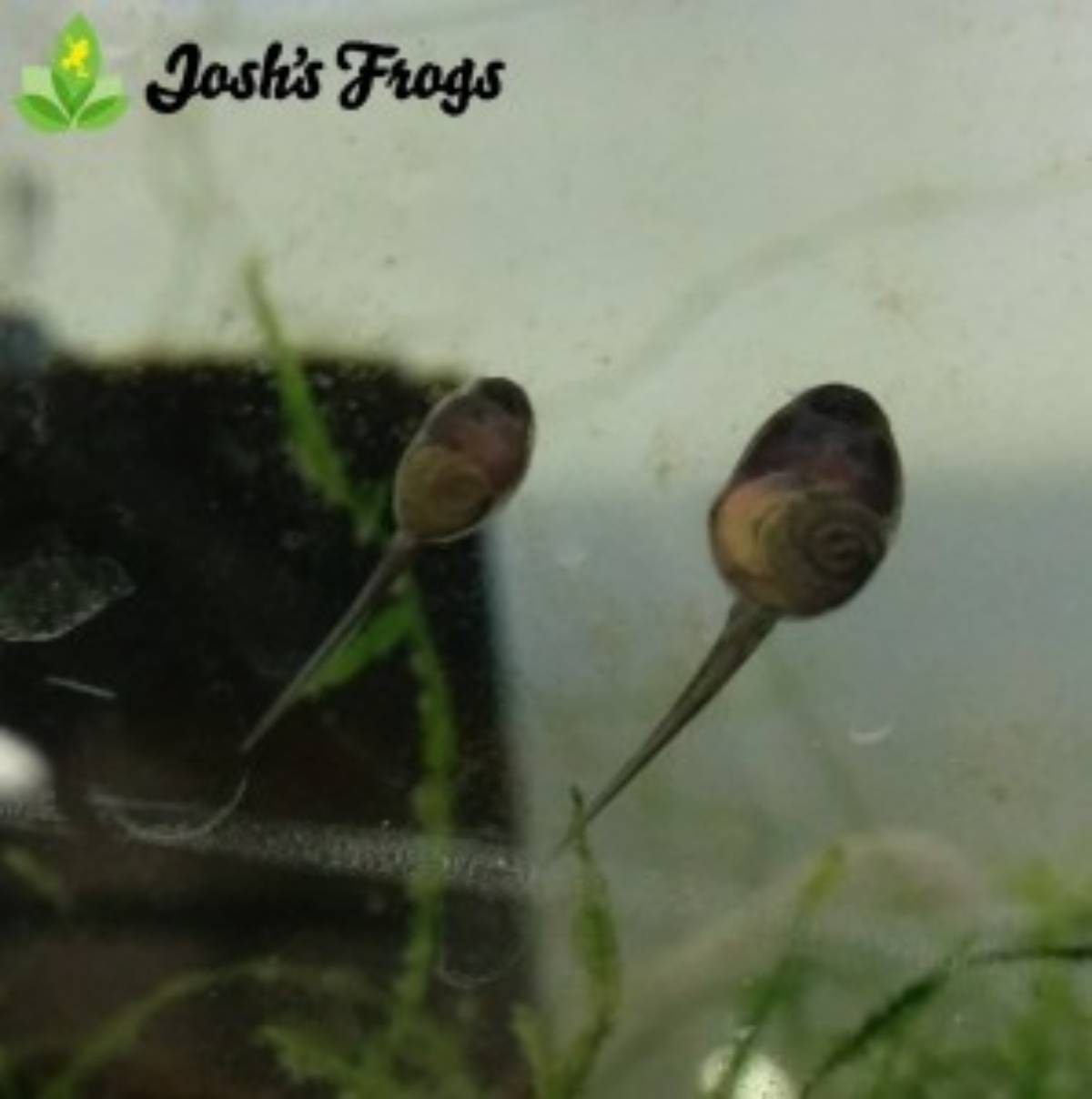 And for something neat, here's an albino tadpole we came across while looking for morphing toadlets. Generally, albino tadpoles fail to thrive and perish before morphing, but Josh has high hopes for this guy, whom we have affectionately named Pinkie.
And for something neat, here's an albino tadpole we came across while looking for morphing toadlets. Generally, albino tadpoles fail to thrive and perish before morphing, but Josh has high hopes for this guy, whom we have affectionately named Pinkie.
Now for an update on the 3 separate rearing tanks. So far, it looks like rearing tank #1 and #3 are about equal, and rearing tank #2 is lagging behind a bit. Rearing tank #1 is pictured below, followed by rearing tank #2 then rearing tank #3.
UPDATE: 4/30/2014
We've had 7 more yellow spotted climbing toads morph today, and I strongly suspect more will be pulled before we go home tonight. Trish took a moment and captured some brand spankin' new YSCT froglets in macro:
UPDATE: 5/7/2014
About 60 young Yellow Spotted Climbing Toads are out of the water, and we're pulling 5-15 or so per day now. We did have a bit of an issue with some tadpoles in the pond, as they were overfed a bit, but losses were minor and a few 25% water changes fixed it right up!
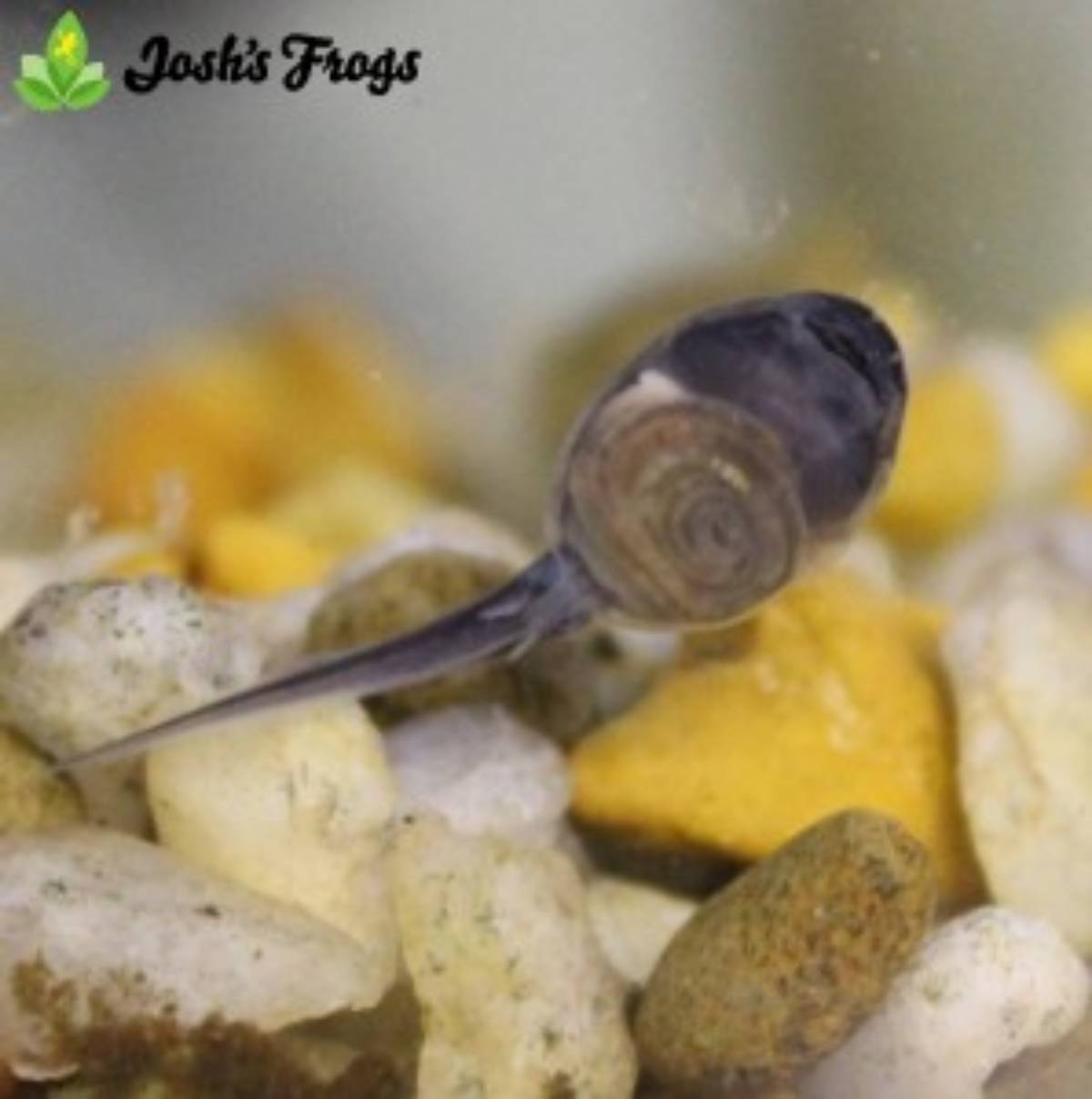 Several hundred/a couple thousand tadpoles still remain, most of which now have teeny, tiny back legs. We expect most of them to come out over the next 2-3 months.
Several hundred/a couple thousand tadpoles still remain, most of which now have teeny, tiny back legs. We expect most of them to come out over the next 2-3 months.
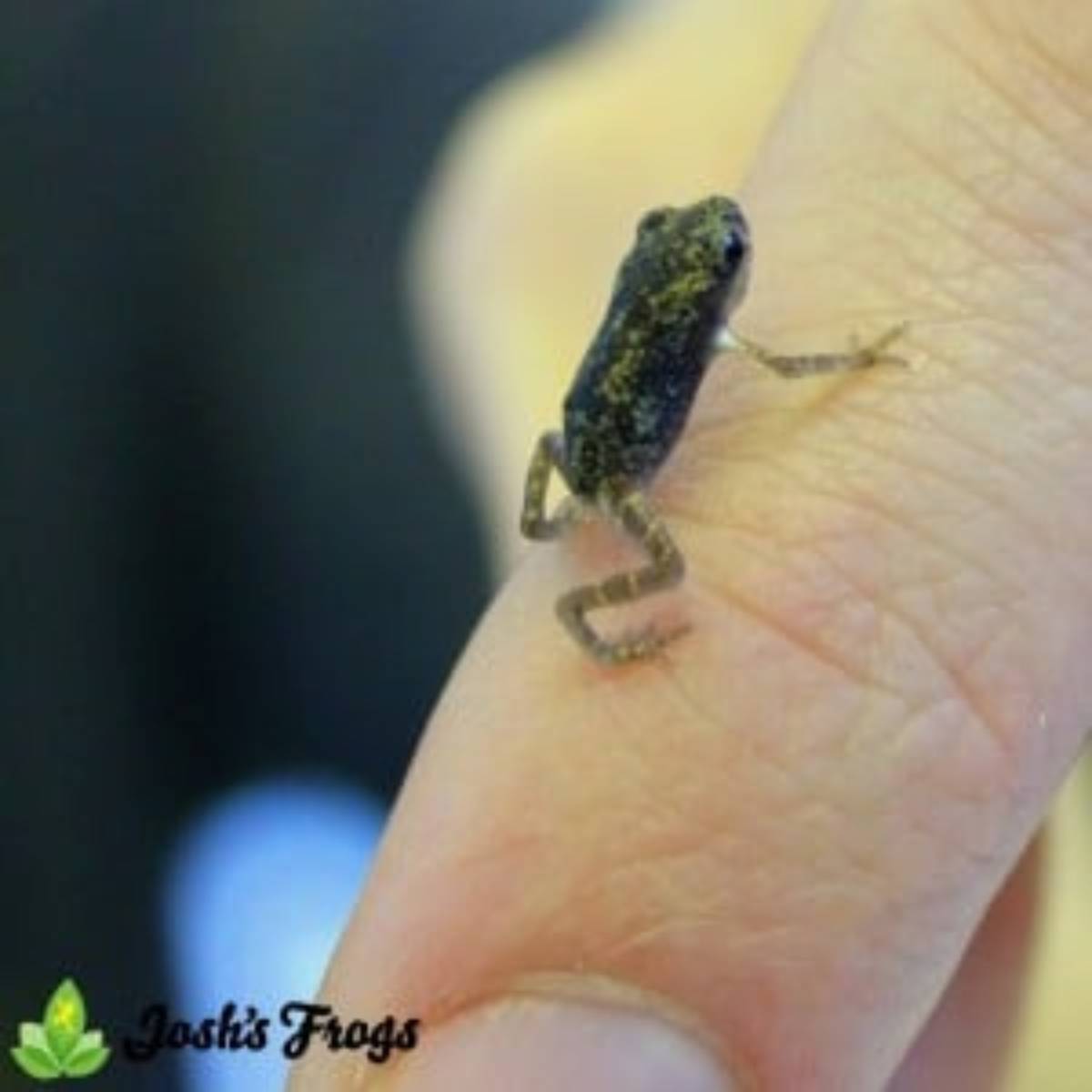 Young yellow spotted climbing toadlets are active and growing, and already eating pinhead crickets! They have quite a bit of color to them, and a slightly granular texture. I can't believe how active they are, constantly hopping about and creating more poop than physically possible for such a small frog.
Young yellow spotted climbing toadlets are active and growing, and already eating pinhead crickets! They have quite a bit of color to them, and a slightly granular texture. I can't believe how active they are, constantly hopping about and creating more poop than physically possible for such a small frog.
UPDATE: 5/14/2014
We have great news - over 100 healthy, growing toadlets are out of the water! We're also getting some conclusive results on our rearing tank experiment with the tadpoles.
Rearing Tank # 1 (Indian almond leaves) is producing the largest toadlets, nearly twice the size as any others! The tadpoles have eaten nearly all of the leaves in the aquaria. We're going to try introducing boiled Indian almond leaves into other tadpole tanks, and see what happens. Rearing Tank # 2 has the most tadpoles still left in the water, and they appear to be lagging behind in development. Rearing Tank # 3 is nearly empty - almost all of the tadpoles have morphed already. The last dozen or so toadlets out of that tank failed to thrive, and came out of the water smaller and very skinny. The tadpoles remaining in Tank # 3 look skinny, do not show much of an appetite, and have locomotion issues. We do not have high hopes for them.
Based on our observations, we feel that high water quality and the presence of Indian almond leaves (or possibly any water logged leaf litter) is very beneficial to Yellow Spotted Climbing Toad tadpoles. A lot of water movement, as provided in Tank # 3 to replicate the stream environment the tadpoles are naturally deposited in, does not seem to be a large factor in the success of yellow spotted climbing toads.
UPDATE 6/11/2014
Great news - they're growing like weeds! We have over 200 yellow spotted climbing toads that are absolutely thriving on a diet of pinhead and 1/8 inch crickets, and expect to have a TON available in July! We're currently housing them in Exo Terra large Breeder Boxes set up like we house young bumble bee toads:
Check 'em out! The toads are already developing great colors, and are very active. They seem to grow a ton every day!


 UPDATE: July 31st, 2014Good news! The yellow spotted climbing toadlets are thriving, and Josh's Frogs will have them up for sale on the website August 8th - next Friday! Click the link below to check them out: http://www.joshsfrogs.com/frogs-for-sale/yellow-spotted-climbing-toads-for-sale.htmlUntil then, enjoy these pictures!
UPDATE: July 31st, 2014Good news! The yellow spotted climbing toadlets are thriving, and Josh's Frogs will have them up for sale on the website August 8th - next Friday! Click the link below to check them out: http://www.joshsfrogs.com/frogs-for-sale/yellow-spotted-climbing-toads-for-sale.htmlUntil then, enjoy these pictures!






 Watch our video about our success with breeding Yellow Spotted Climbing Toads!
Watch our video about our success with breeding Yellow Spotted Climbing Toads!


